Last summer we ended up in Rome, and I say ended up because if it wasn’t for a certain concert we attended, I surely wouldn’t have chosen July for visiting Rome. It happened that one of our favorite contemporary musicians published the dates of his summer tour right before Luka’s birthday, and I really wanted to gift him something memorable (and also I really wanted to hear Yann Tiersen play the compositions from his Eusa album). Of all the cities where he was to have concerts at, Rome was the closest to us. So in July, we headed to Rome, and typically for us, took advantage of the situation to browse around Italy a little bit more, spending two days in Tuscany on our way there (you can read all about it in my previous posts).
I’ve been to Rome once before, as an art history student on a field trip- only, a professor that took us there was exclusively interested in Antiquity, so we didn’t get to see a whole lot of wonderful Baroque I’m so fond of and that Rome has aplenty. I remember arguing with the professor at one point to let us see St. Peter’s Basilica from the inside, and being so excited when we finally got in, that I somehow missed Michelangelo’s Pieta. This time, I was on a quest to properly visit the Basilica, to climb up the dome (last time we accidentally ended up in the crypt), to spot the Pieta, and to revisit the San Luigi dei Francesi church that held some of the most beautiful paintings I’ve ever seen- Caravaggio’s scenes from St Matthew’s life. With the risk of sounding like a massive nerd (which I was), seeing Bernini’s St. Peter’s square and Caravaggio’s paintings for the first time brought tears to my eyes, and I wanted to experience that feeling again.
A b&b we stayed at was conveniently located just a couple of minutes walk to Piazza del Popolo, from where we’d either walk to the sites we wanted to see or take a metro or a tram. One thing that we decided as soon as we parked our car on the street was not to turn it on again until the morning we had to leave. Traffic was just the worst, which quite annoyed us as pedestrians as well. Everything is subordinated to cars and Vespas, and if something looks close enough to walk to on the map- trust me, it isn’t, because there are a million roads you have to pass, and if there’s a traffic light, it’s probably red. But let’s move on to happier things!
The b&b was great- we had a tastefully arranged (and clean!) room and bathroom, a reception even though it only had three rooms, breakfast in room (which basically means croissants in bed), a very good location, all that at a pretty affordable price too. I’ll share all the details of the places we liked at the bottom of the post, so keep on reading!
Since we already offhand spent half of our first day in Rome in Tuscan thermal baths and had to brave Roman traffic jam on the way to our accommodation, we were left with a warm July afternoon to begin our Roman adventure. Without a particular plan, we started walking- from Piazza del Popolo, down Via del Babuino, to Spanish steps. We noticed Rome was crowded as soon as we started walking, but on and around Piazza di Spagna, the crowds were in full bloom. It was nearly impossible to approach Bernini father and son’s Fontana della Barcaccia, and when we managed to climb on top of the Spanish steps, assertive flower vendors joined the crowds. Since we are already immune to all types of persistent vendors, they didn’t bother us much, but boy did they disconcert the American tourists. They’d put a rose into a girl’s hand like it was a gift, and then ask for money- when the girl answered that she didn’t want the rose, they wouldn’t accept it back so we witnessed people leaving flowers on the floor and turning away quickly in the attempt to escape. Those kinds of crowds (and the consequent tourist scams, bad restaurants, tacky souvenir shops) followed us during our entire Roman holiday, and that’s why we concluded that no one in their right mind would consciously choose to come back to Rome in high season.
One of the things we wanted to experience was Roman food scene, and I did my research beforehand- that evening we had a reservation at traditional Roman trattoria Matricianella, following in Mimi Thorisson’s foodsteps again. On our first evening, we ordered pasta cacio e pepe, oxtail stew with potatoes and rosemary, a whole lot of fritti (basically, fried things like zucchini flowers, mozzarella, ricotta, etc.), and a delicious ricotta chocolate cake for dessert. I’d come back to Rome only for those fritti and cacio e pepe again.
After breakfast in bed the next morning, we headed directly to Monti neighborhood. On a blog that sadly doesn’t exist anymore (but here is Jennifer’s Instagram account), I’ve read that it is a quirky residential neighborhood with colorful houses, cool designer shops, good restaurants and the views of the Foro Romano. There was also a well-known restaurant with fixed lunch menus at a good price run by an Umbrian chef (and we learned before that when it comes to food, Umbrian and Sicilian are just the best. Roman comes pretty close though). We just ordered a lunch menu and got gazpacho (very fresh and very flavoury), cannelloni filled with vegetables and the most delicious dessert Luka still dreams of (I think it was called Crema Bavarese but it was unlike anything we’ve tried before). We browsed around Monti afterward, entering ceramic and jewelry shops, having drinks at a cool bar and catching glimpses of the ruins on the Forum below. I loved leafy facades, quirky little cafes, bicycles parked outside of the colorful houses, and local grandpas wandering around in their undershirts.
Since the neighborhood is fairly close to Colosseum, we descended from quiet Monti only to be surrounded by the crowds and persistent street vendors once again. There were also tour buses, enormous groups rolling out of them and army guarding it all. For us, it was not a pleasant experience at all, and we did not want to waste time in lines and wander around the amphitheater at the hottest hour of the day, so we hopped on the metro to see another of the busy Roman landmarks, the Fontana di Trevi.
Now by now we already knew it was obviously going to be crowded, but the fountain was recently renovated and an ex-conservator in me wanted to see how it was done. It was done beautifully, and the fountain is a dream- even the crowds couldn’t stop us from taking a moment to marvel at it. But the number of people there equaled to a rock concert and there was even fountain “police”, preventing people from entering (why ever would you anyway??) and sitting on the fountain. We decided to come back the next day, in the evening, because I read in the Lonely Planet guide it would be quieter (it wasn’t though).
That evening we had a concert to attend, so we headed to our room earlier to prepare and to leave for the Auditorium Parco della Musica which was a bit outside of the center. The concert itself was… beautiful. It is hard to describe music with words, but the atmosphere was magical, Yann Tiersen’s divine music under the stars, what more can one wish for?
The next day, I was on a hunt for Caravaggio, Bernini, Michelangelo, Bramante, Borromini, and antique Roman monuments. We started early because we knew that if we wanted to properly enjoy St Peter’s Basilica, we’d have to arrive before the crowds. As Santa Maria del Popolo church was open in the morning (not the case at every hour of the day), we took some time for Caravaggio’s beautiful display of shadow and light on two paintings depicting the Crucifixion of St Peter and the Conversion of St Paul. Luka’s photographer’s eye was enchanted.
Arriving at St Peter’s square in the Vatican is always a beautiful experience, but never quite like the first time- I remember how sublime I felt when I found myself surrounded by Bernini’s truly majestic colonnade, Bramante’s dome and Maderno’s facade of the Basilica for the first time. I’ve seen it on many pictures and videos before, but they did not quite show the grandness of it all. This was my second time, and I enjoyed seeing it all before the long waiting lines formed. This time, I had enough time to climb the dome, watch the marble floor patterns and people small as figurines in that giant space. I also found Michelangelo’s Pieta (victory!) and we climbed the outside of the dome, for model views of the Vatican and the town- it is one of (if not the) most impressive cityscapes I’ve ever seen. From above we could see a circular line formed on the square and joked that by afternoon the line would become a spiral starting at the Egyptian obelisk in the middle of the square.
A visit to St Peter’s took an entire morning, and when we were finally ready to leave, we were already hungry. I did my homework again, by finding a couple of street food pizza places, but eventually choosing Pinsa m’Po whose pizza (or pinsa, a Roman take on pizza with a lighter dough) looked most delicious. We did have to queue a bit, but it was totally worth it, and once a nice Czech family ceded us their table, we were ready for not two, but three pinsas topped with delicious things like zucchini flowers, porcini, artichokes, speck, and burrata. If the Vatican makes you hungry, this is just a perfect spot.
Since three days in Rome is a limited time, to say the least, we had to prioritize, and significantly cut down the list of places we wanted to see. We decided to skip most of the Antiquity as I had enough of that on my field trip, but there was one place I wanted Luka to see. The Pantheon is an architectural wonder- a former Roman temple whose giant dome still is (almost 2000 years after being built) the world’s largest unreinforced concrete dome. The proportions of the building are so perfect, that the height and the diameter of the inner circle are the same- 43.3 meters so the interior could house a sphere of, you guessed, 43.3 meters in diameter. A ray of light coming from its oculus illuminates the dome in a way that all looks very much like an architectural drawing.
Just behind the Pantheon, in front of the Santa Maria Sopra Minerva church, stands Gianlorenzo Bernini’s peculiar sculpture of an elephant holding an Egyptian obelisk. Here is a little explanation of how did the Egyptian obelisk end up on top of an elephant (with quite a cute trunk). We had to see that, and nearby, a Baroque masterpiece- the church of St Ivo alla Sapienza made by Francesco Borromini, one of my favorite architects. Everyone talks about Gaudi’s inventiveness, crazy shapes, and ingenuity, but what about Borromini? He started playing with the classical elements already in the 17th century! It’s enough to look at St Ivo alla Sapienza’s dome from the inside, and a spiral on top of it from the outside to see what I’m talking about. Sadly, we couldn’t enter the church, so we did a couple of photos from the outside and crossed the road to Piazza Navona, with both Bernini’s sculptures in form of Fountain of the Four Rivers and Borromini’s Sant’ Agnese in Agone church (not as crazy as St Ivo but pretty remarkable though).
One last thing I had to revisit in Rome were the Caravaggio’s paintings in San Luigi dei Francesi I was so touched with upon seeing them for the first time as a student. The vocation of St Matthew is one of those paintings that leave you breathless when you see them in their original setting. The light coming from an invisible window on the painting, illuminating Jesus’s cheek, hand and the faces of the men at the table and the wall behind them comes from the same point as the actual window of the church, making you feel that you’re almost taking part in the scene. I hoped it was going to be just the two of us and the painting, but this time we were surrounded by a group, waving around with their selfie sticks, paying no attention whatsoever to the beauty of the scene in front of them. What good does it make to have a photo of Caravaggio’s masterpiece on your phone, when you had the opportunity to truly experience it in person?
That evening we had two things in mind: one, to come back for the fritti in Ristorante Matricianella, which we did (with a reservation, quite important!), and to come back to the Fontana di Trevi without the crowds. The dinner was excellent, as expected, but the fountain was as crowded, if not more, than during the day. So either Lonely Planet was wrong, or each person visiting Rome read the exact same thing in their guide, and decided it was a great idea too. We managed to brave the crowds and make our way to the cant of the fountain where we threw some coins in to ensure our return to Rome.
That was our last evening in Rome, and the next morning, before heading back home, we took some time to visit the Villa Borghese gardens, just above Piazza del Popolo. The gardens were nice (a bit littered though with plastic bottles and glasses from the night before), I wouldn’t say the nicest gardens I’ve been to- but the view of the fountain (holding yet another Egyptian obelisk) on Piazza del Popolo was well worth climbing for. I’d say that our visit to Rome was not a very organized one, and we obviously missed on a lot of things (saving something for next time!), but we actually had a lot of fun, art, and good food, which is always a good thing. Our next visit to Rome will evolve around food again, but also around significantly lesser known parts, so tell me, what are your favorite hidden corners of Rome? Please share, I won’t tell! :)
Here are the places we tried and liked (non of this is sponsored content):
Suite Beccaria A Piazza del Popolo Bed and Breakfast- A b&b we stayed at.
Ristorante Matricianella- The best fritti we’ve ever had. Reserve in advance.
L’ Asino d’ Oro- Umbrian restaurant in Monti neighborhood that has delicious lunch menus.
Pinsa 'mpo- Roman street food pizza close to Vatican.
*If you found this post useful, and feel like you’d like to buy me a coffee as a little thank you for writing it, you can do so via Ko-fi platform. Thank you!
Pin this article for later!


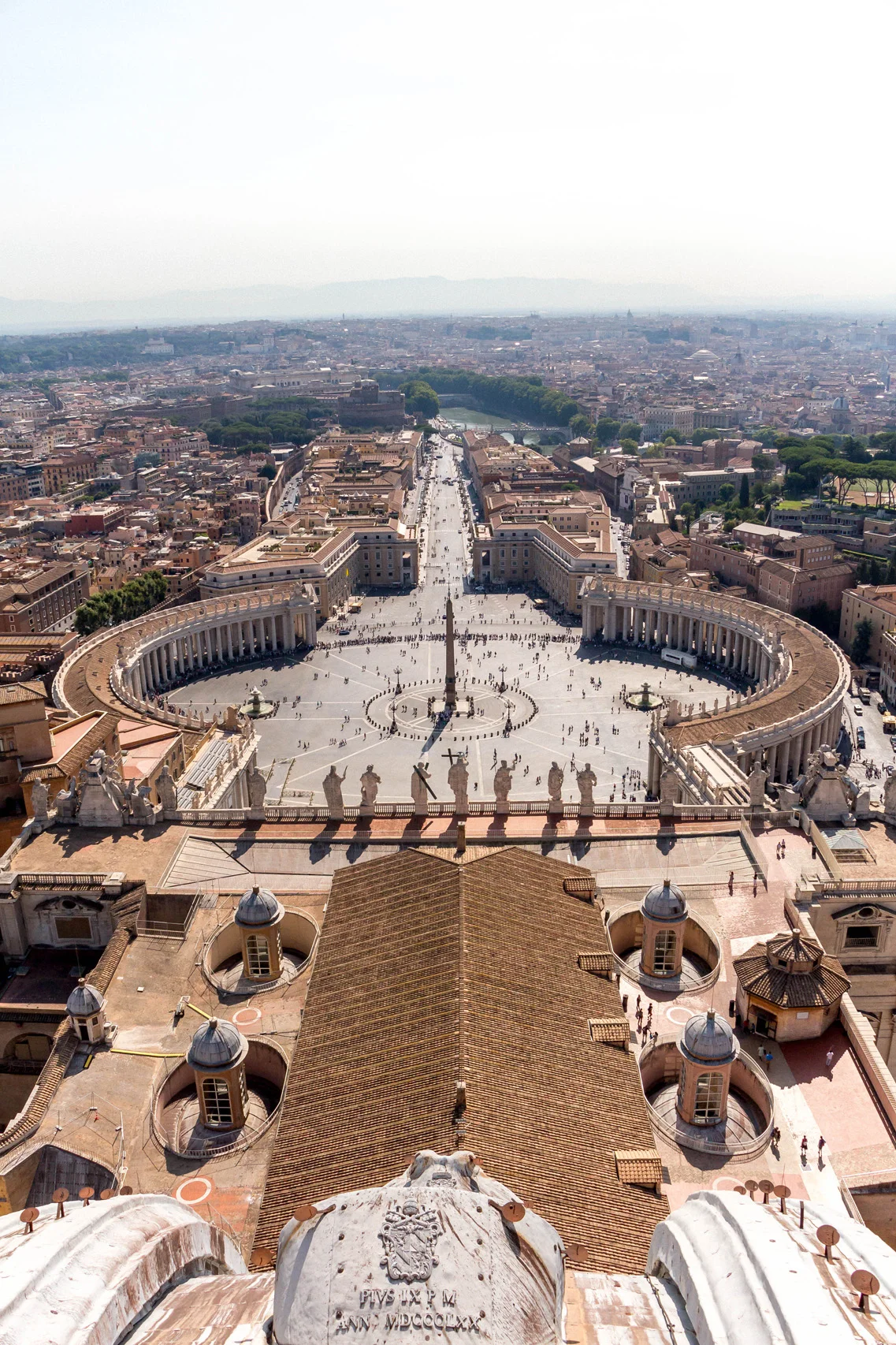
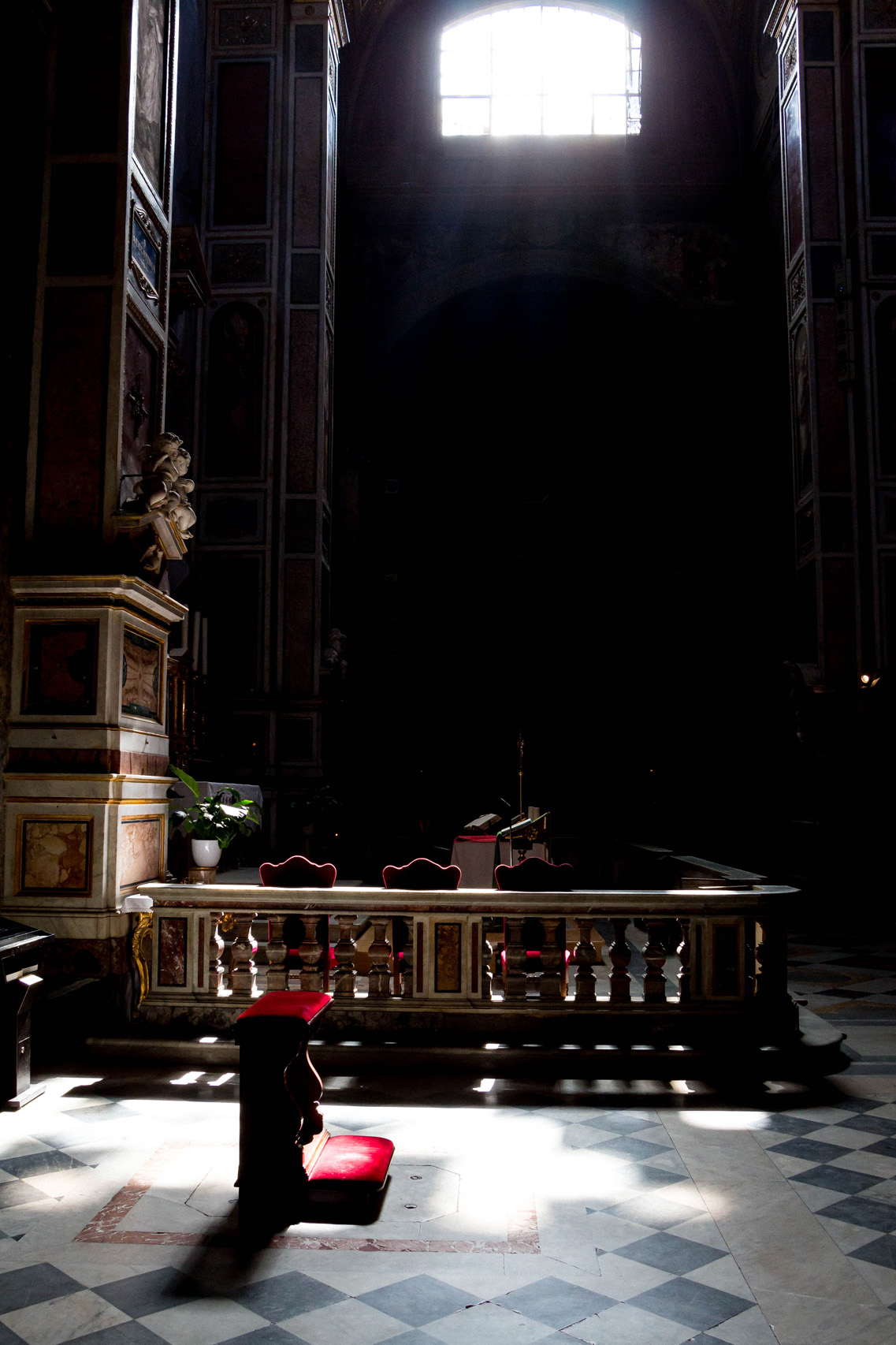
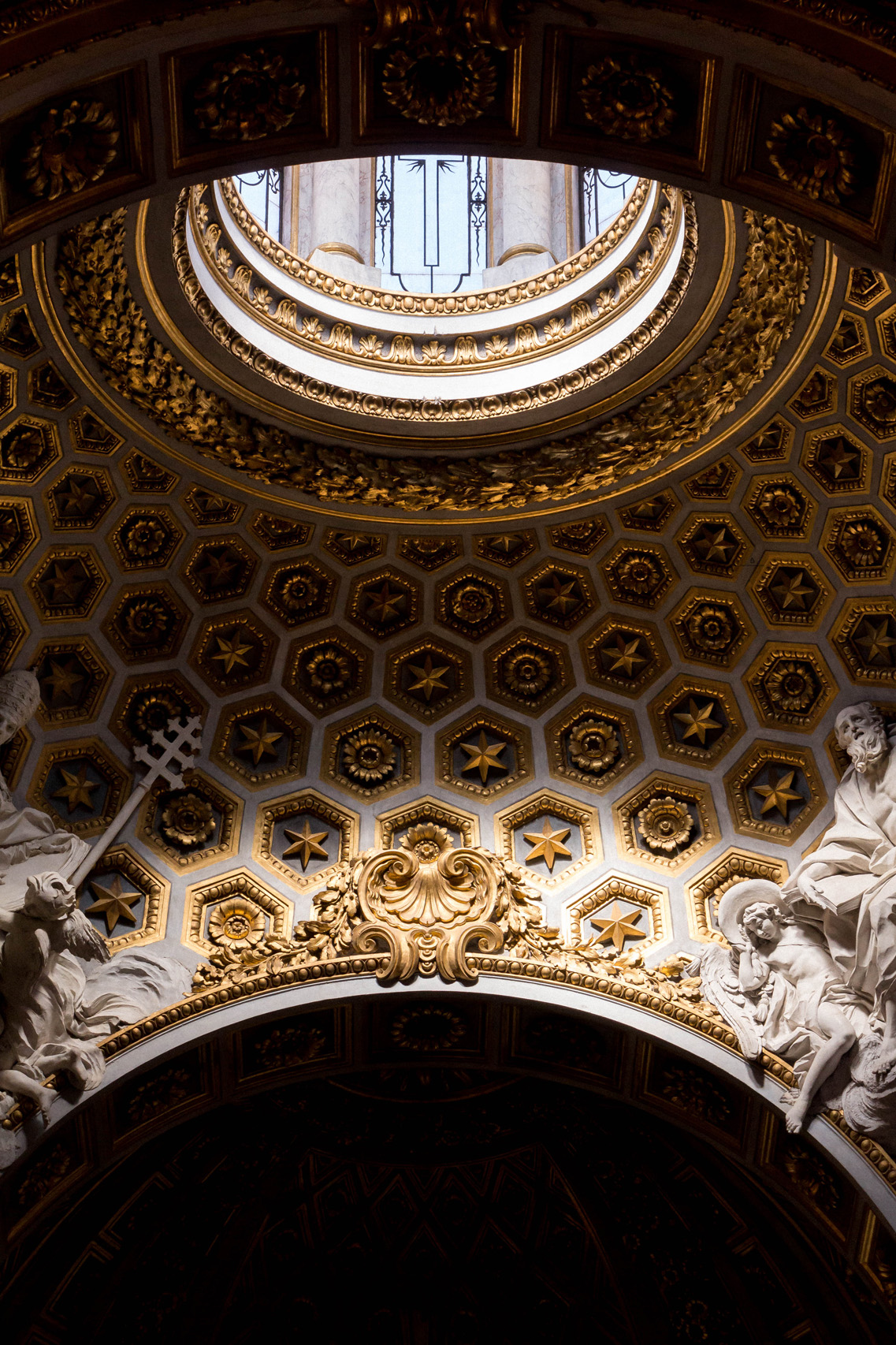
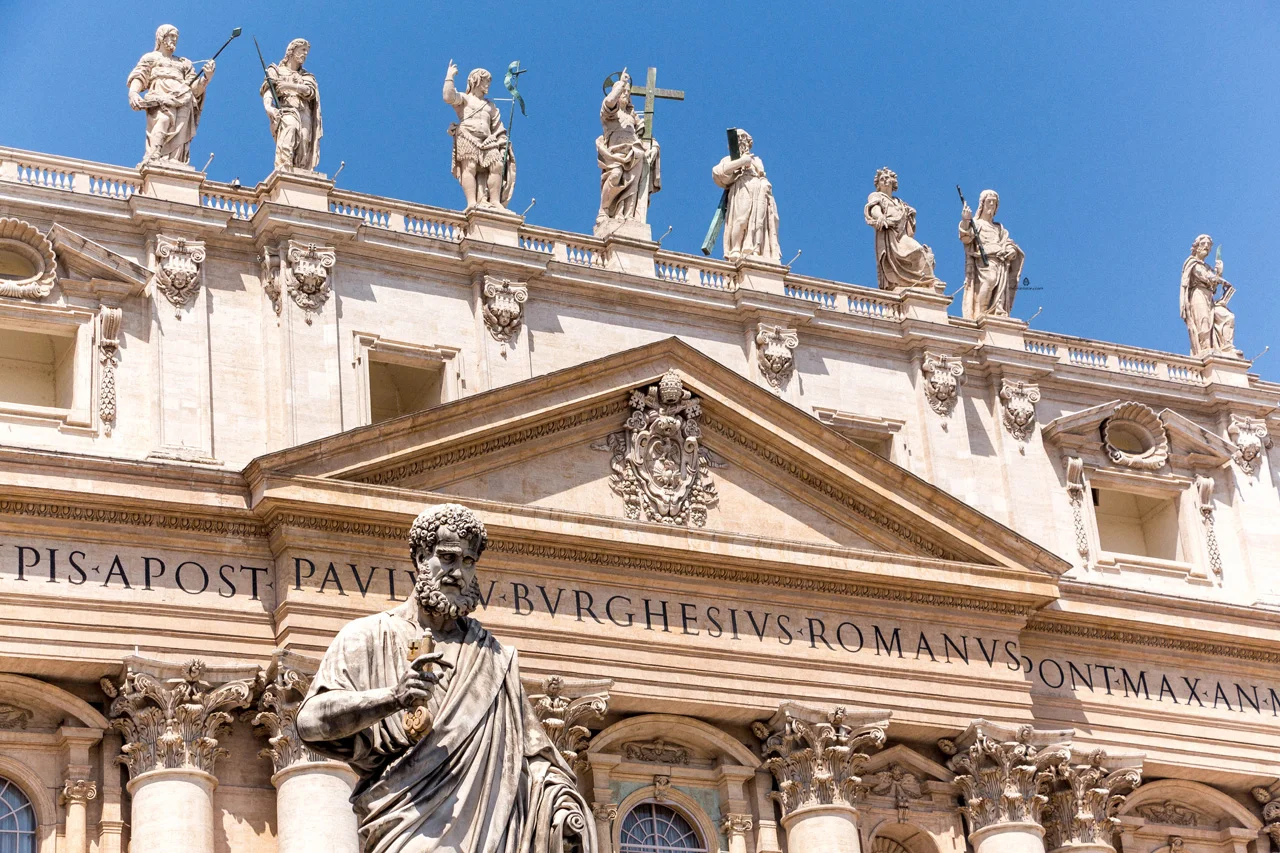
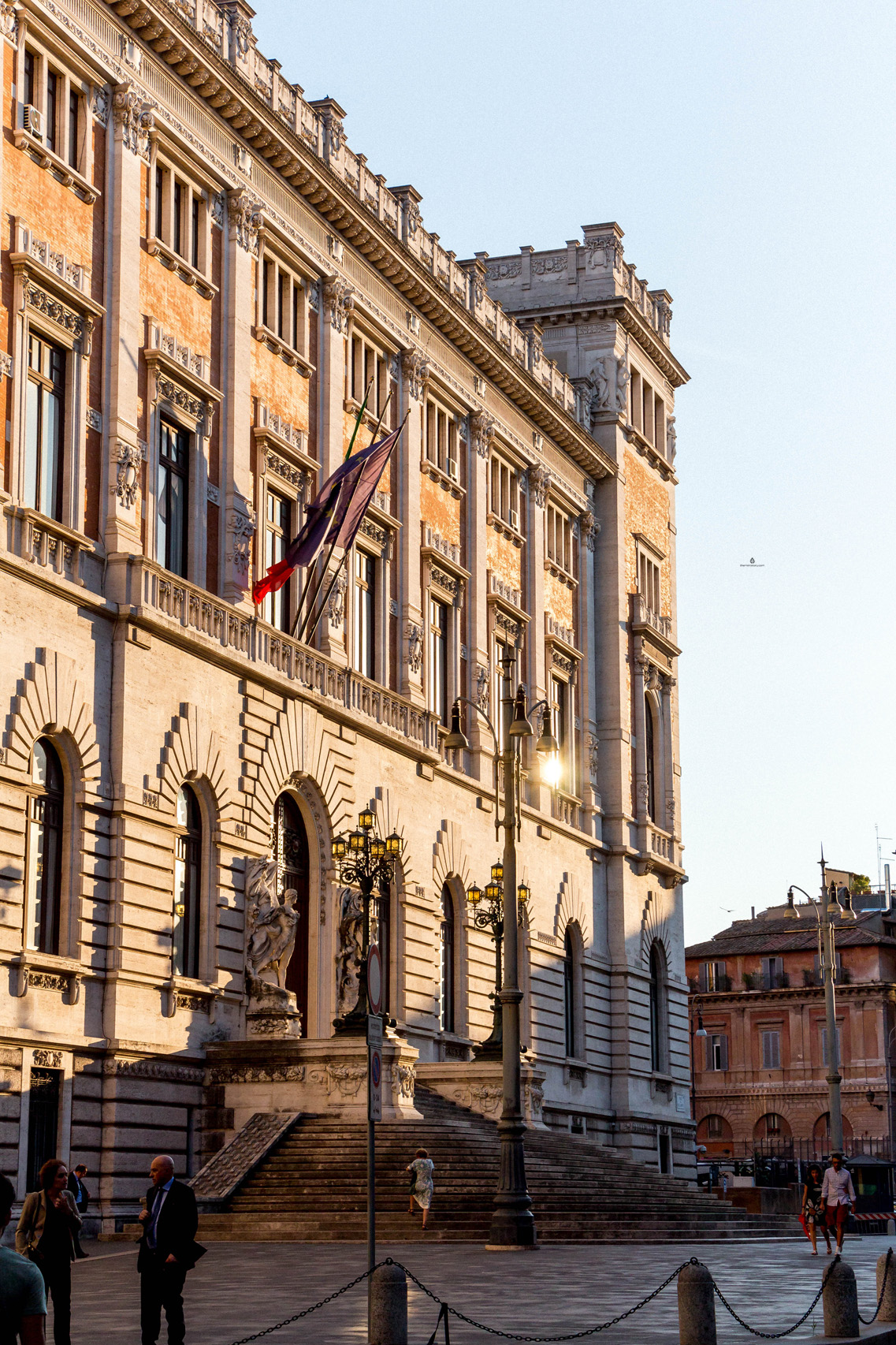
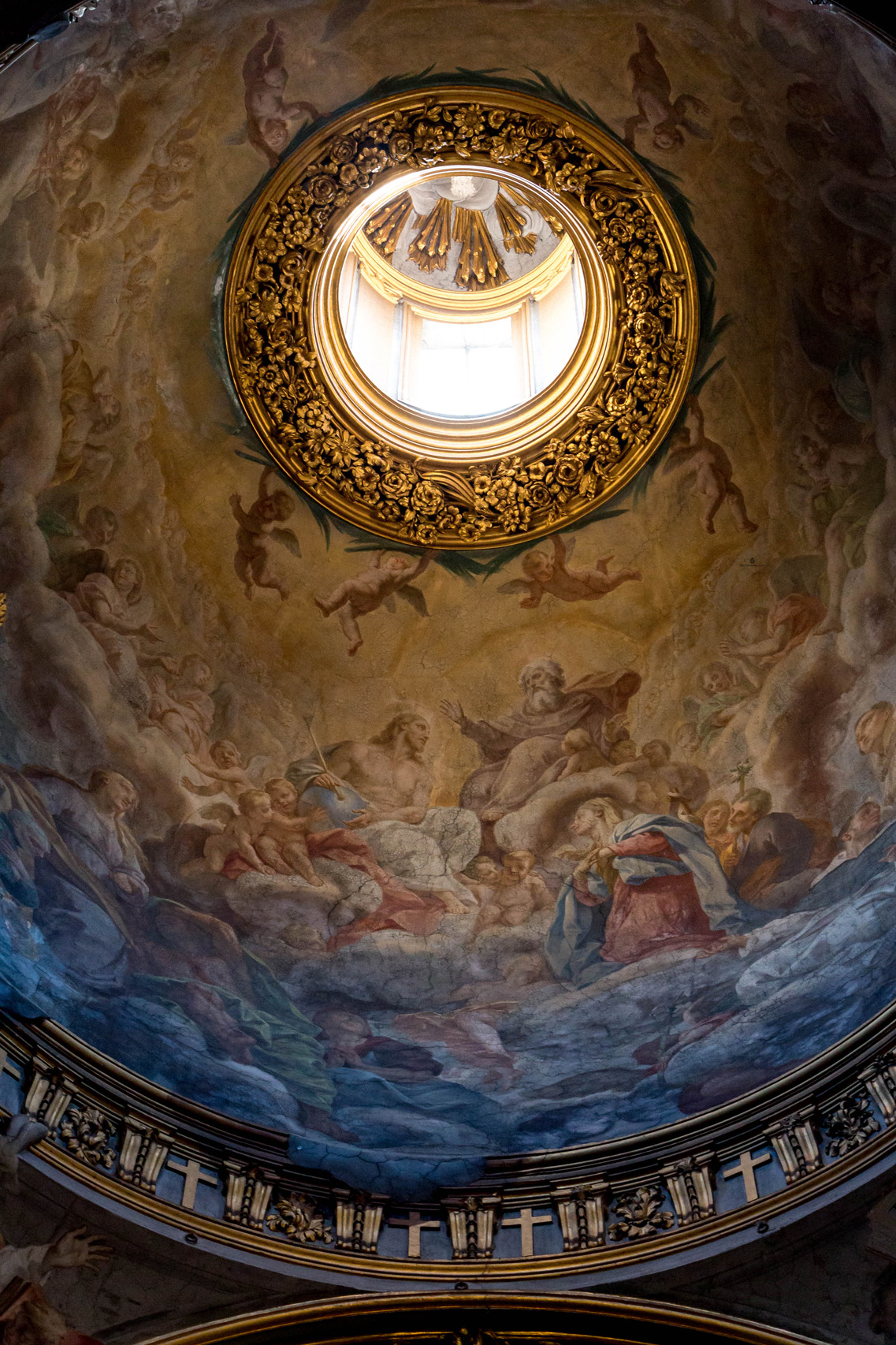
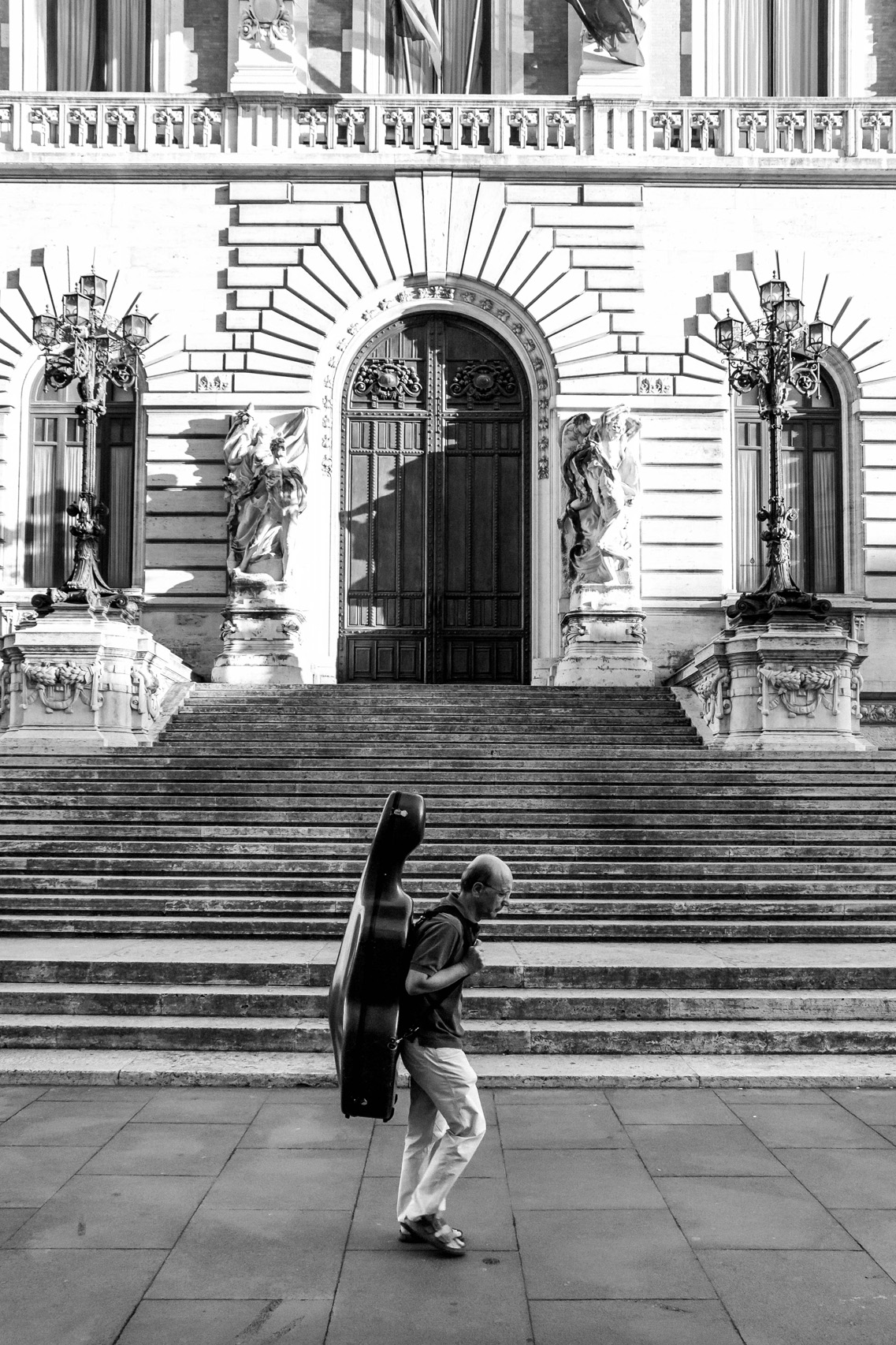

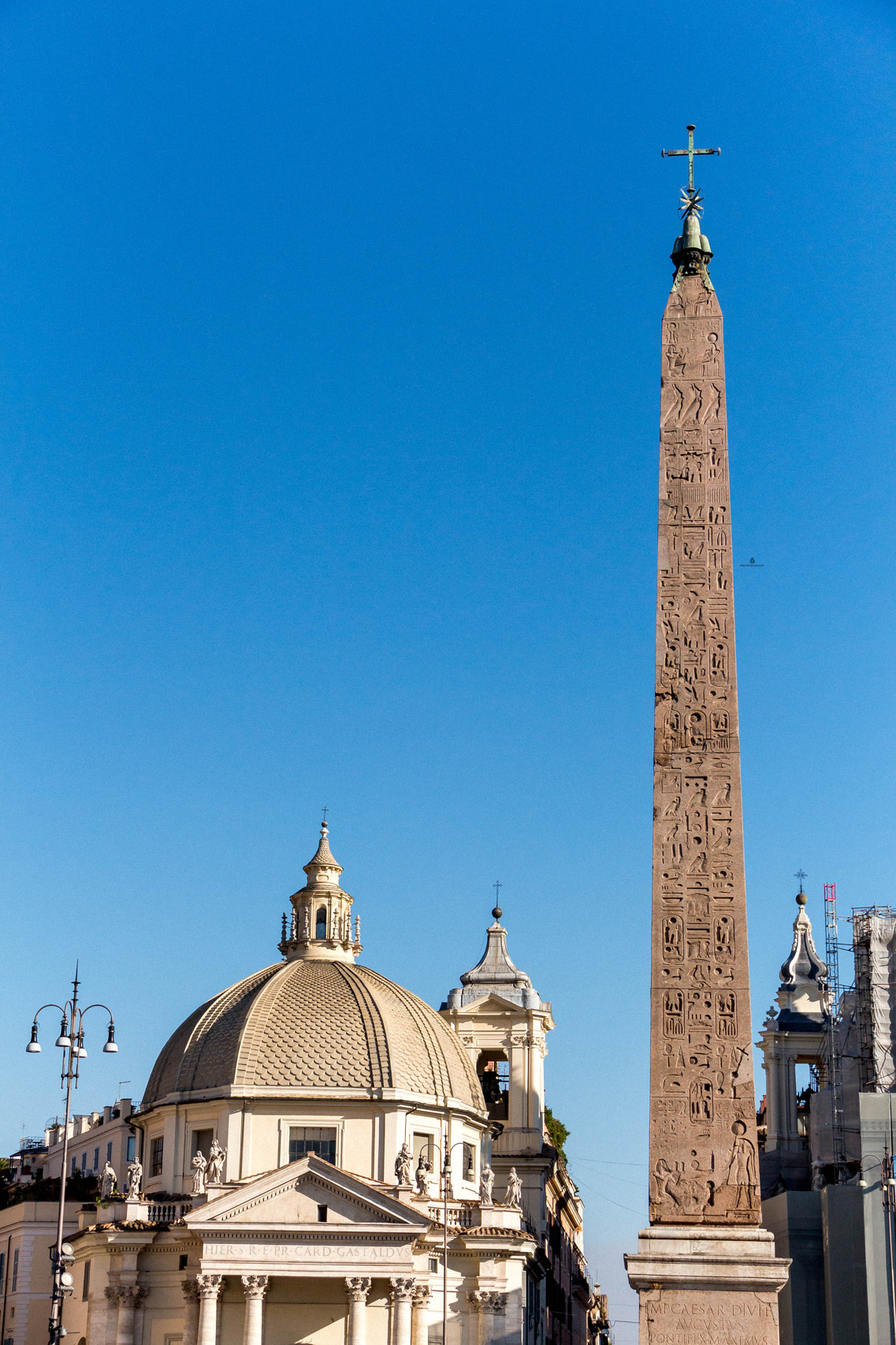
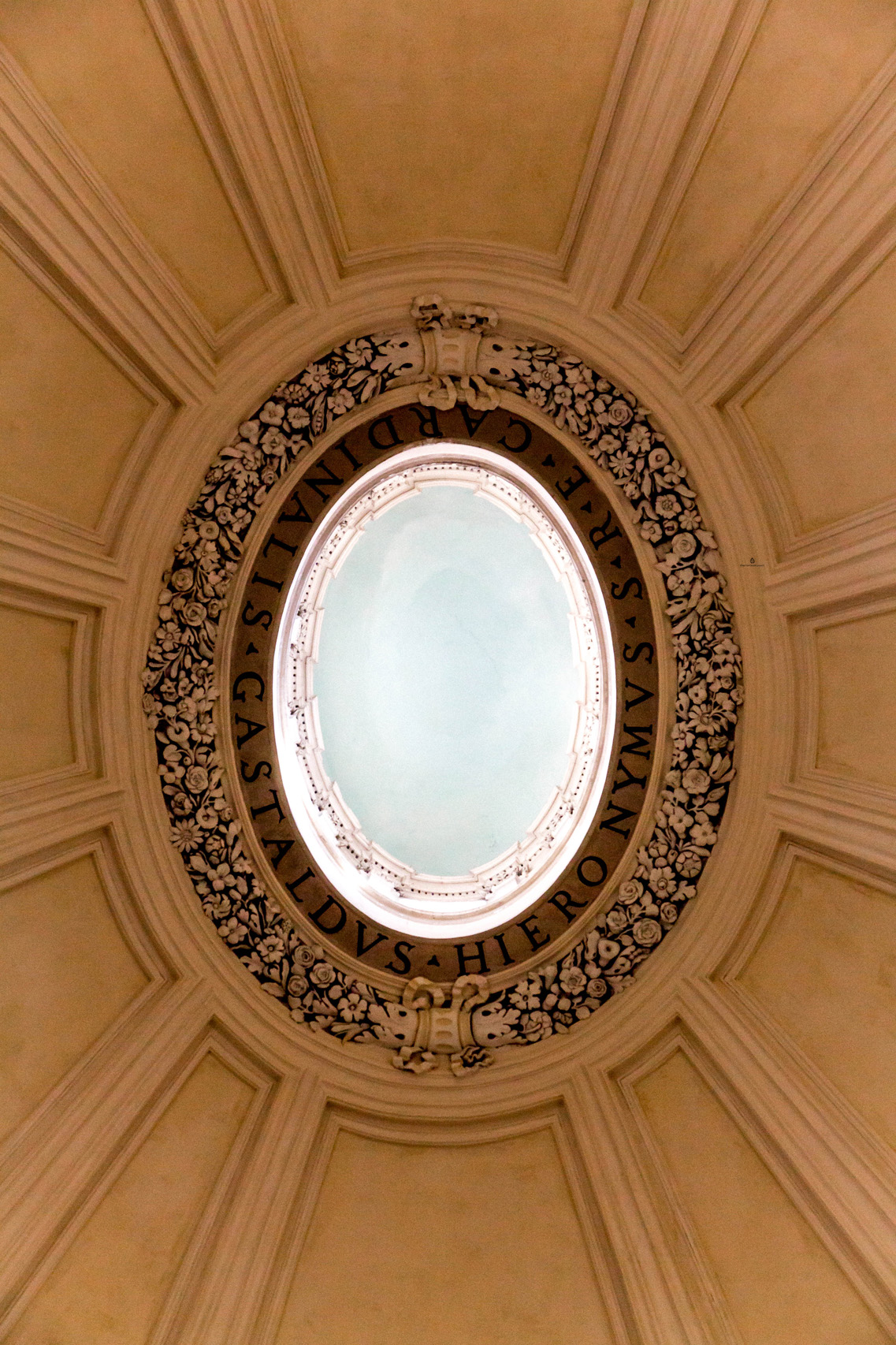
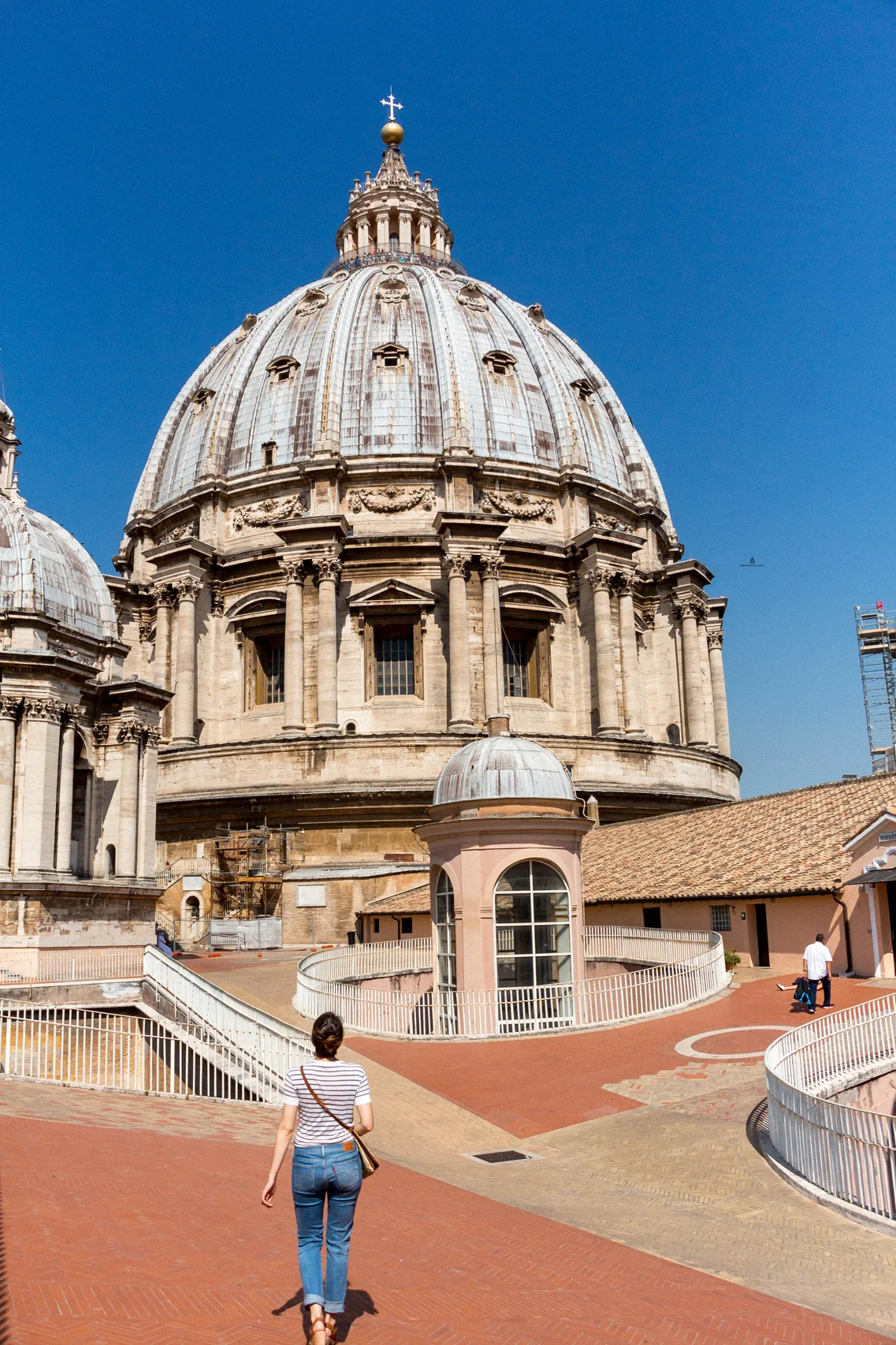
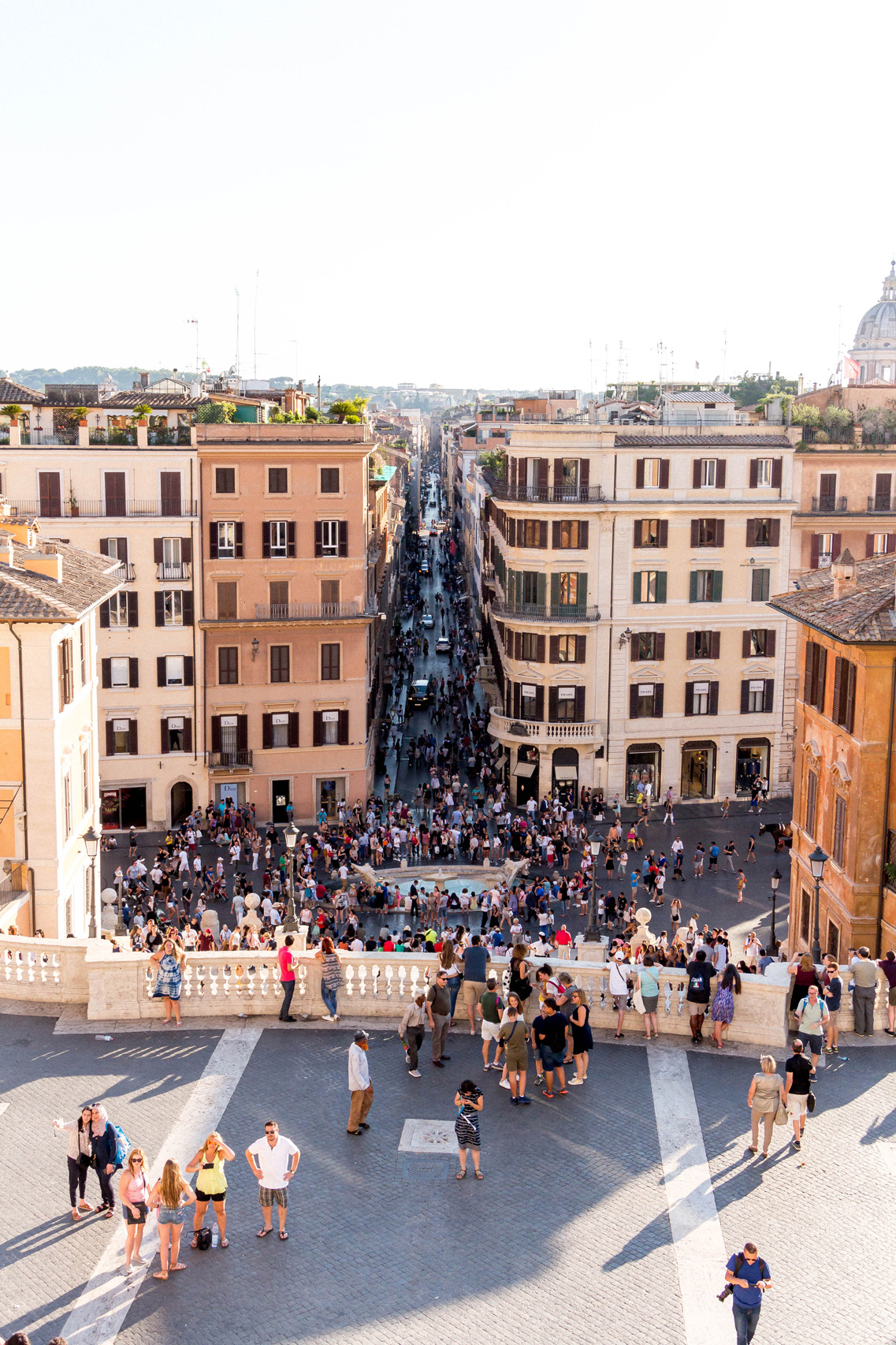

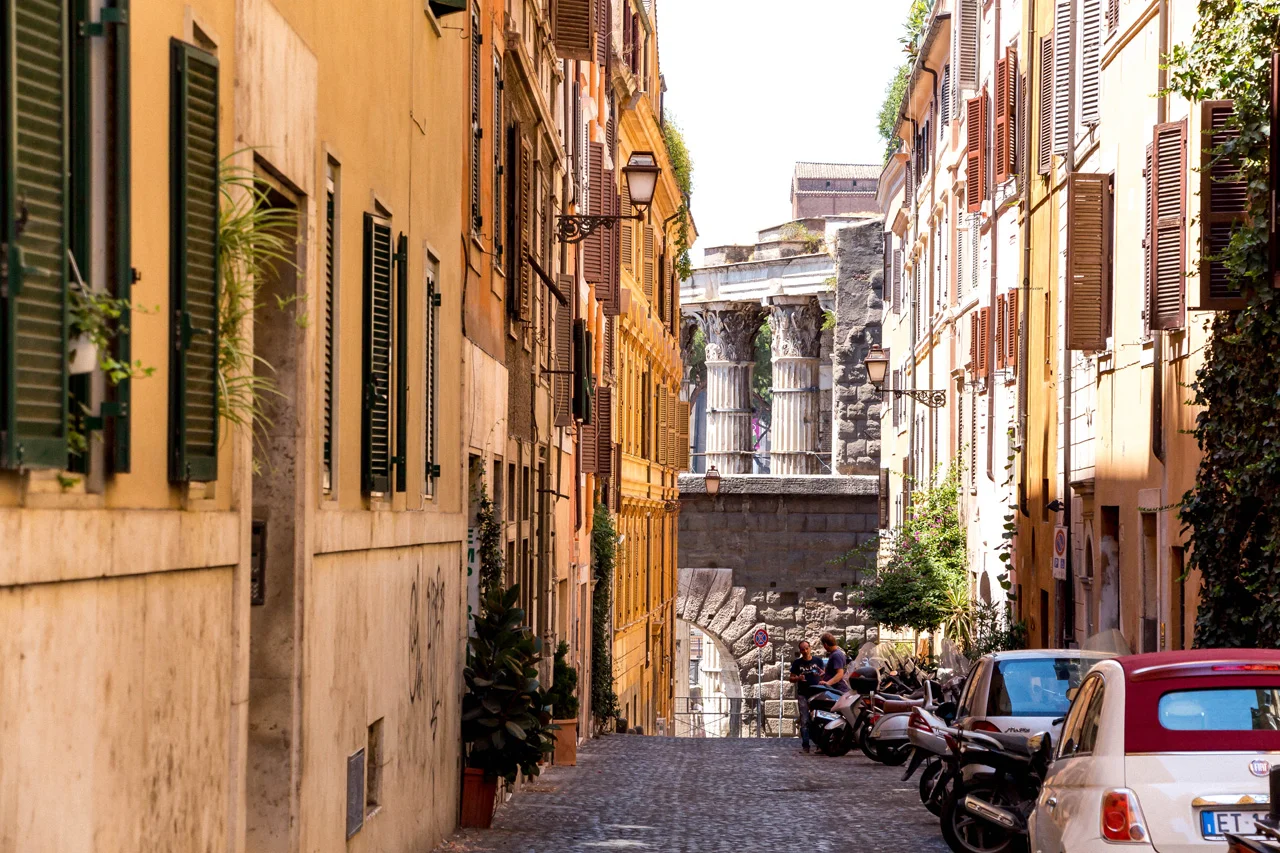
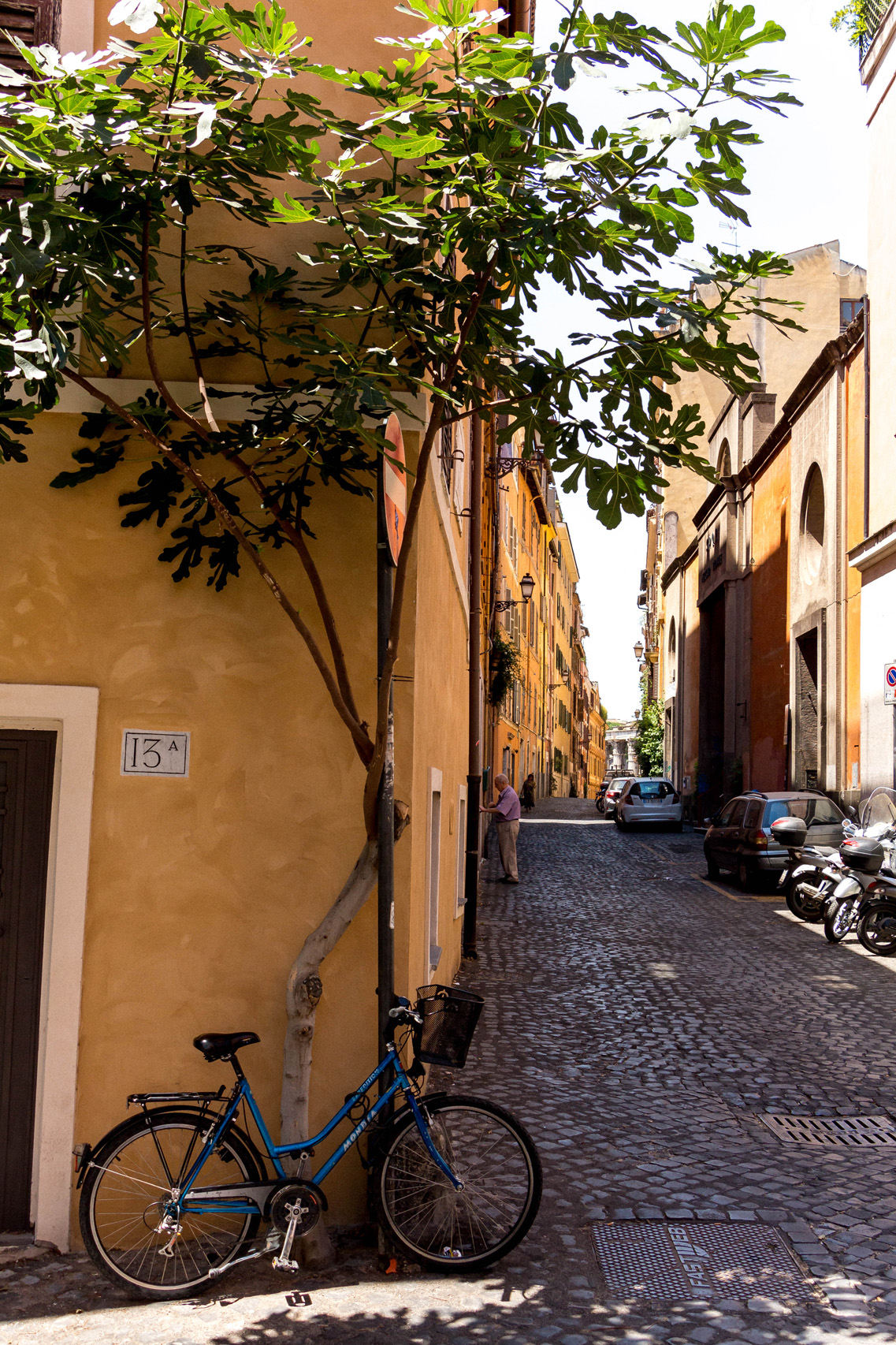
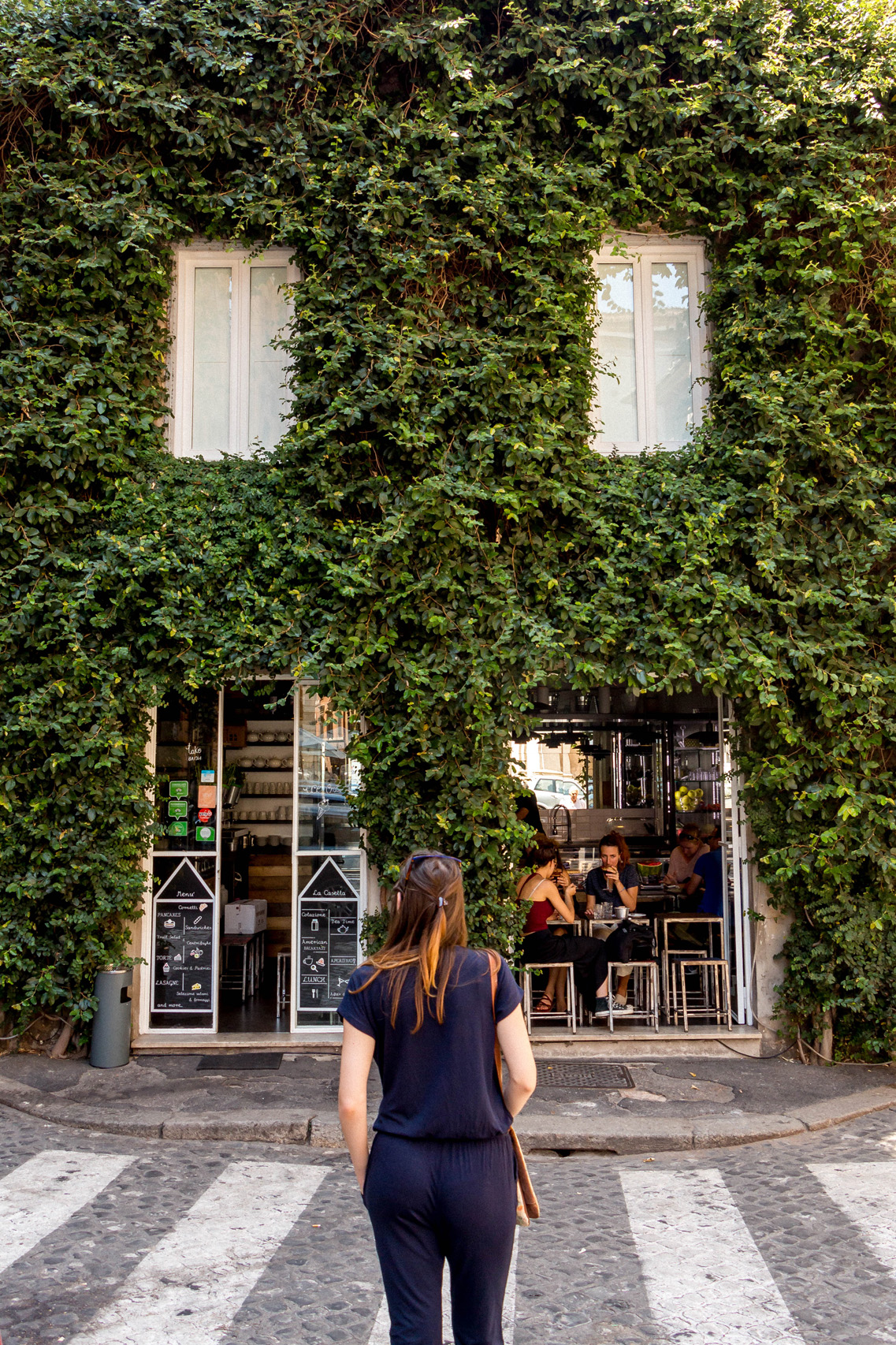
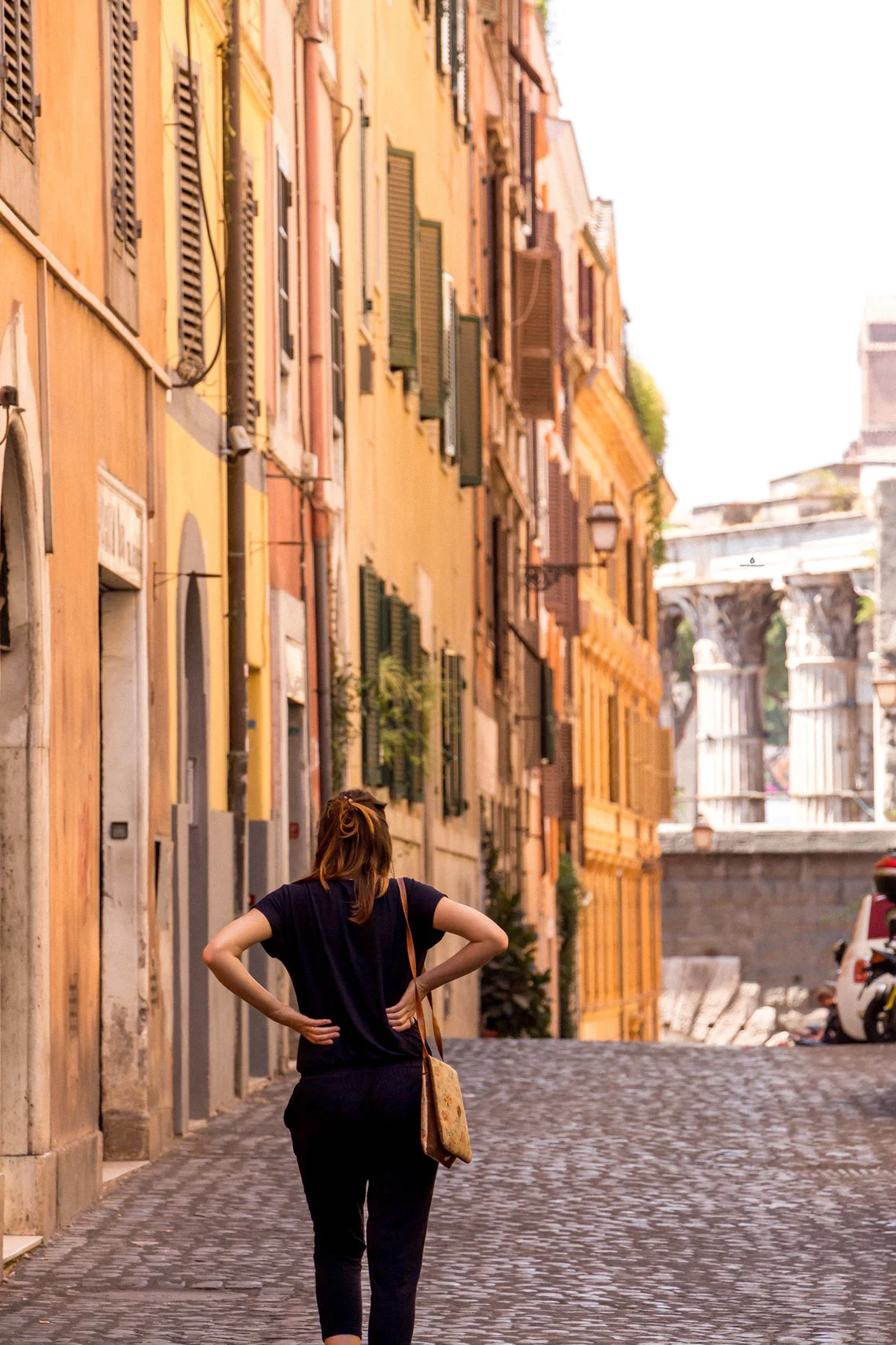
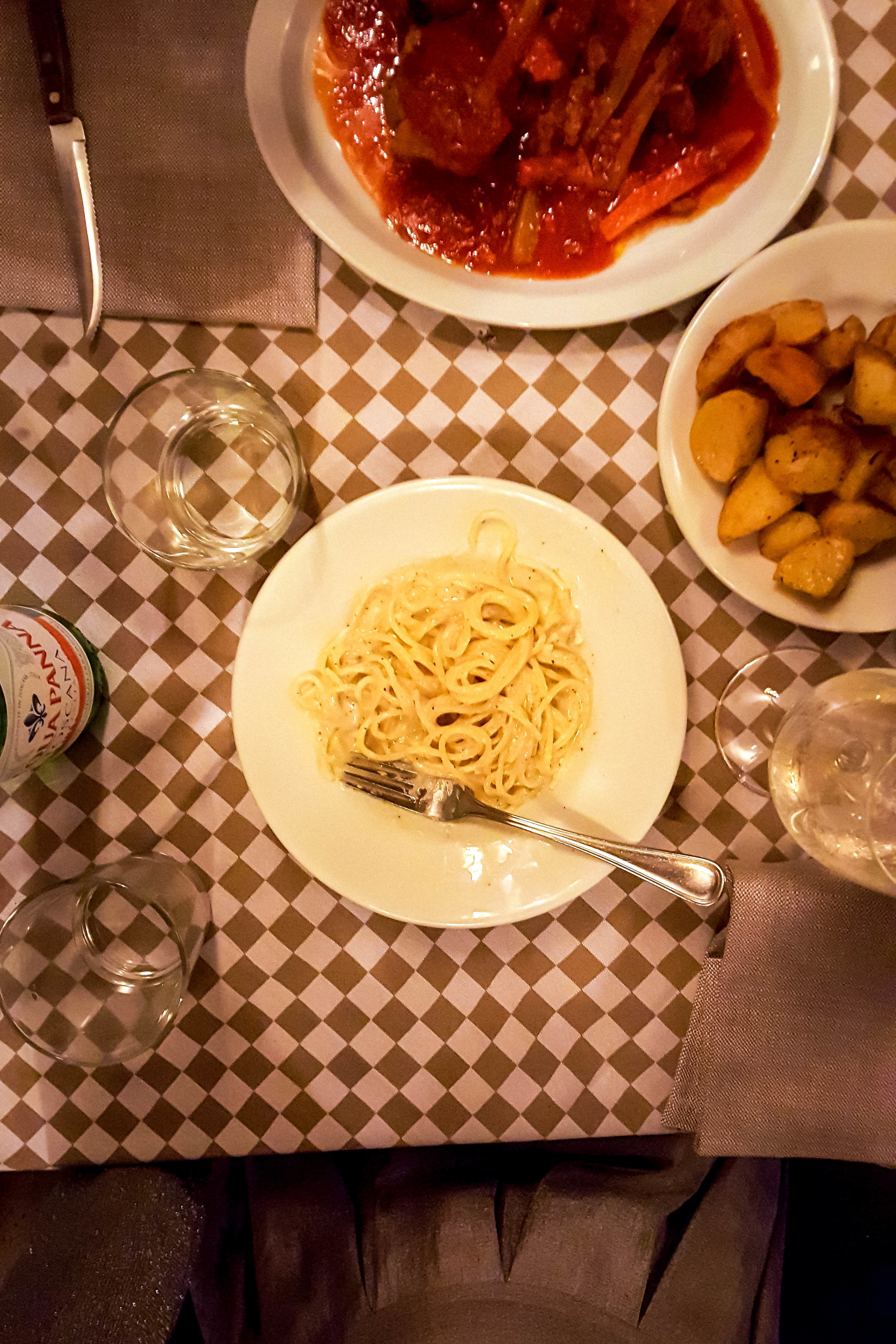
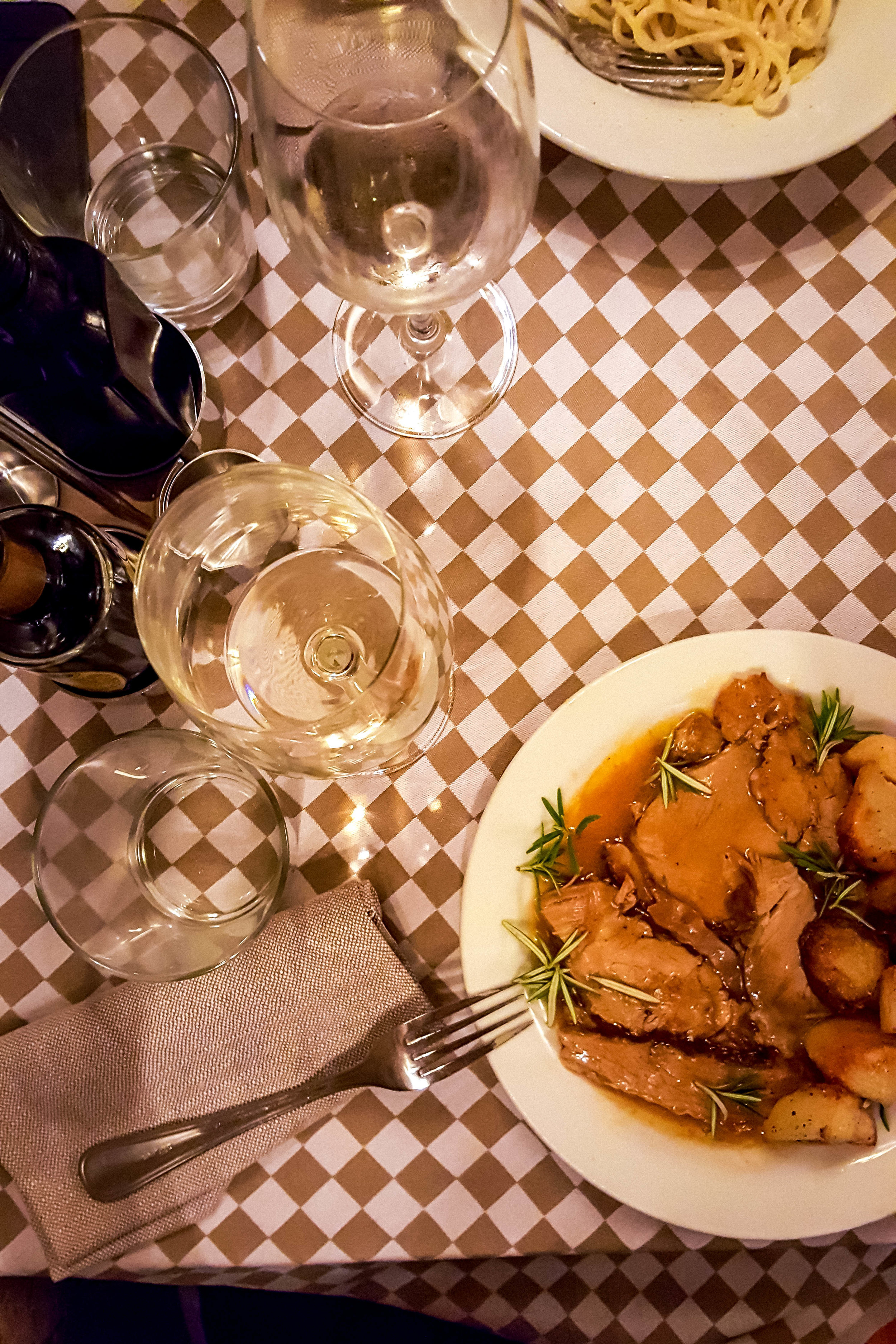
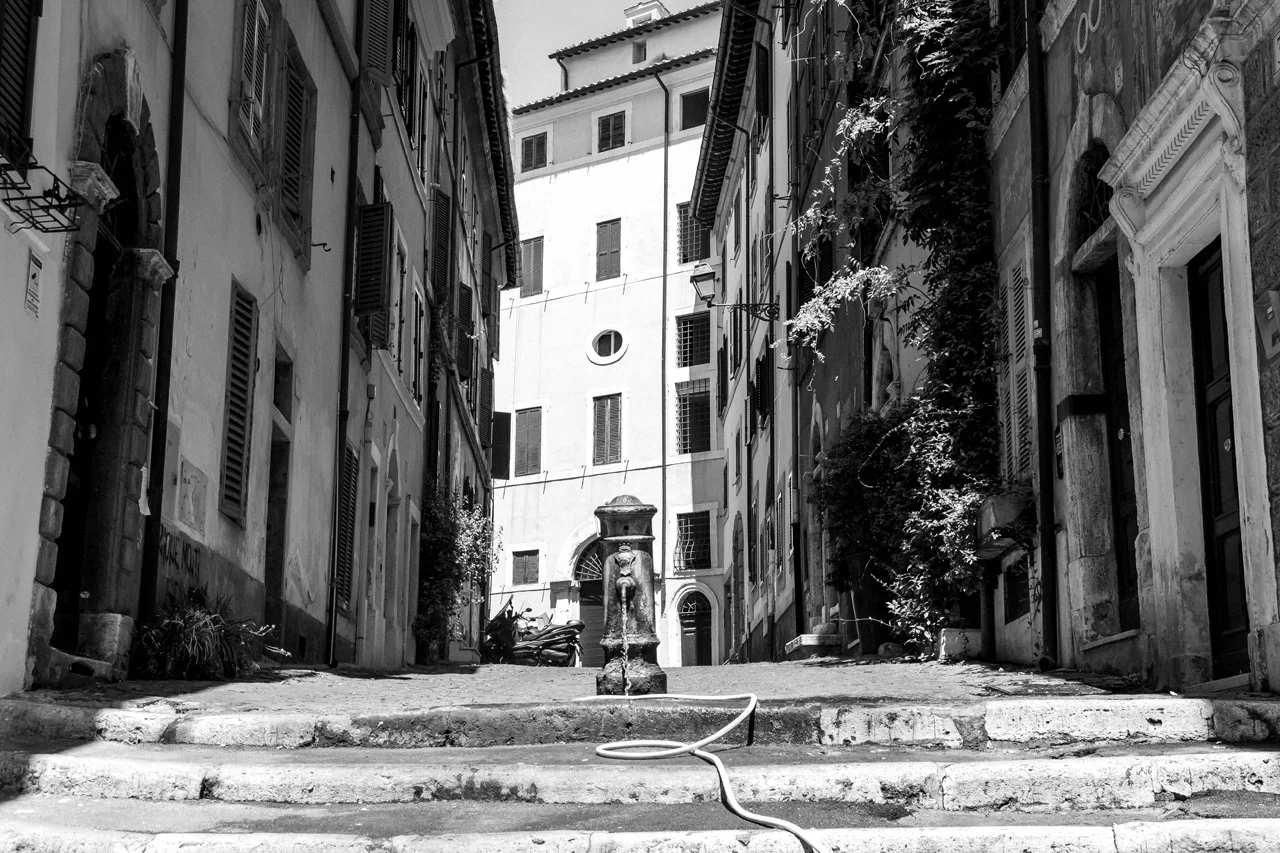
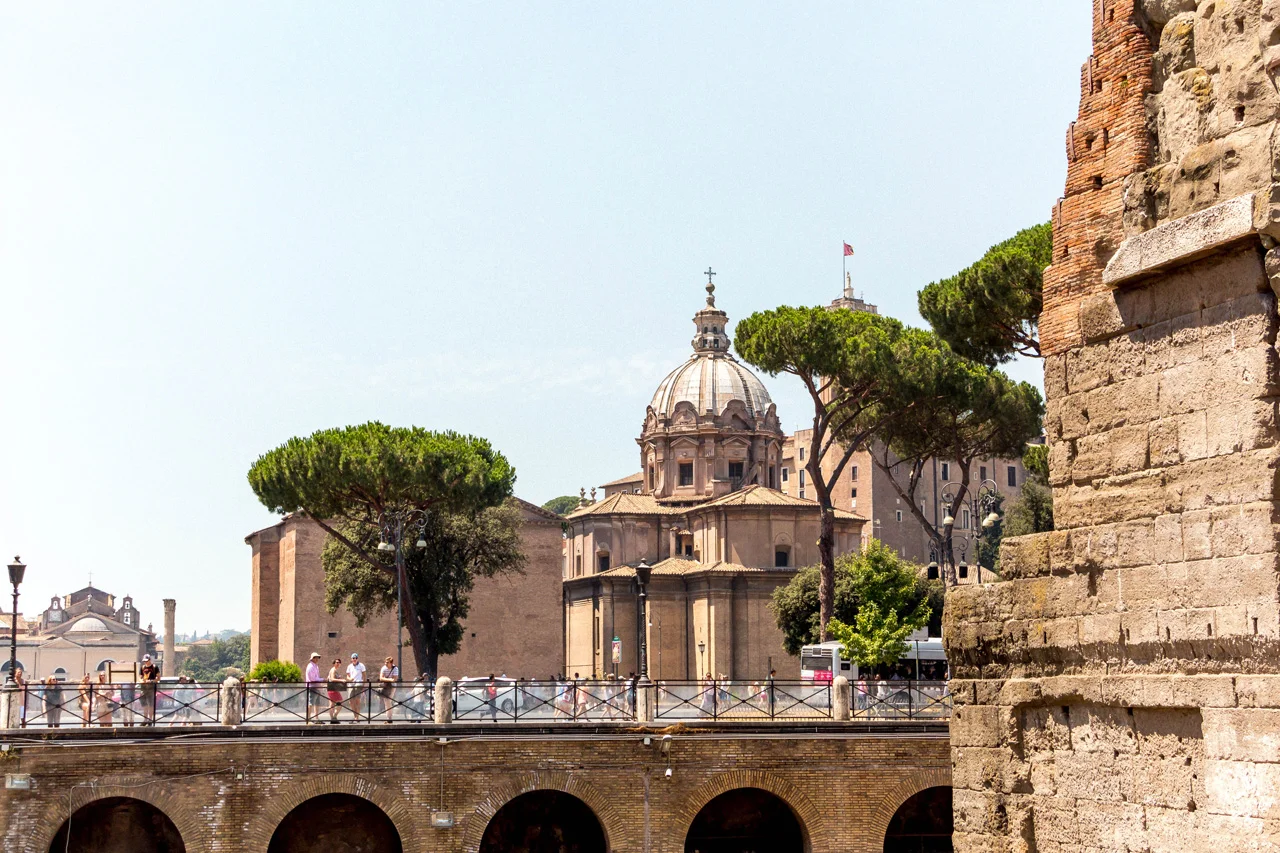
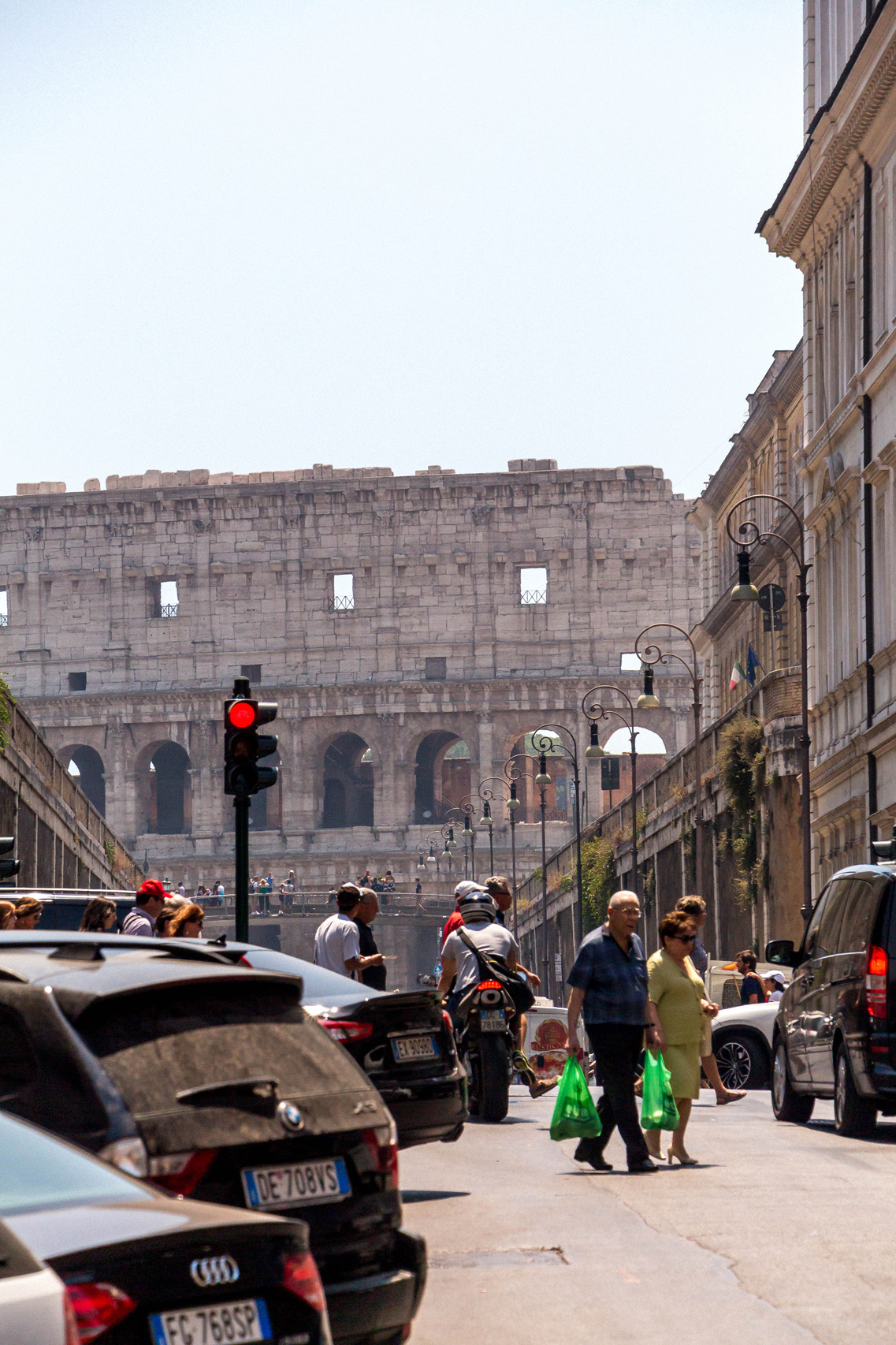
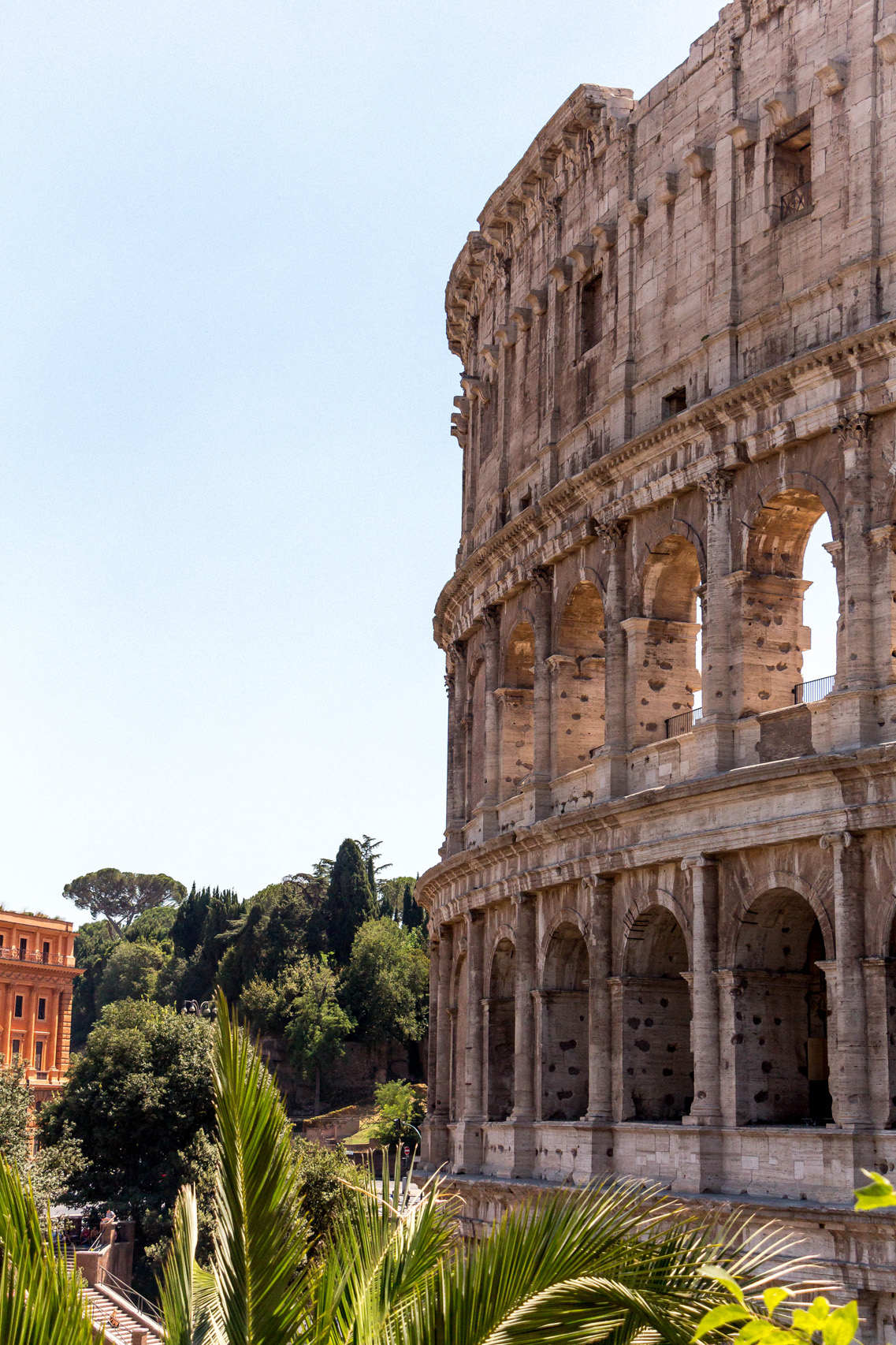


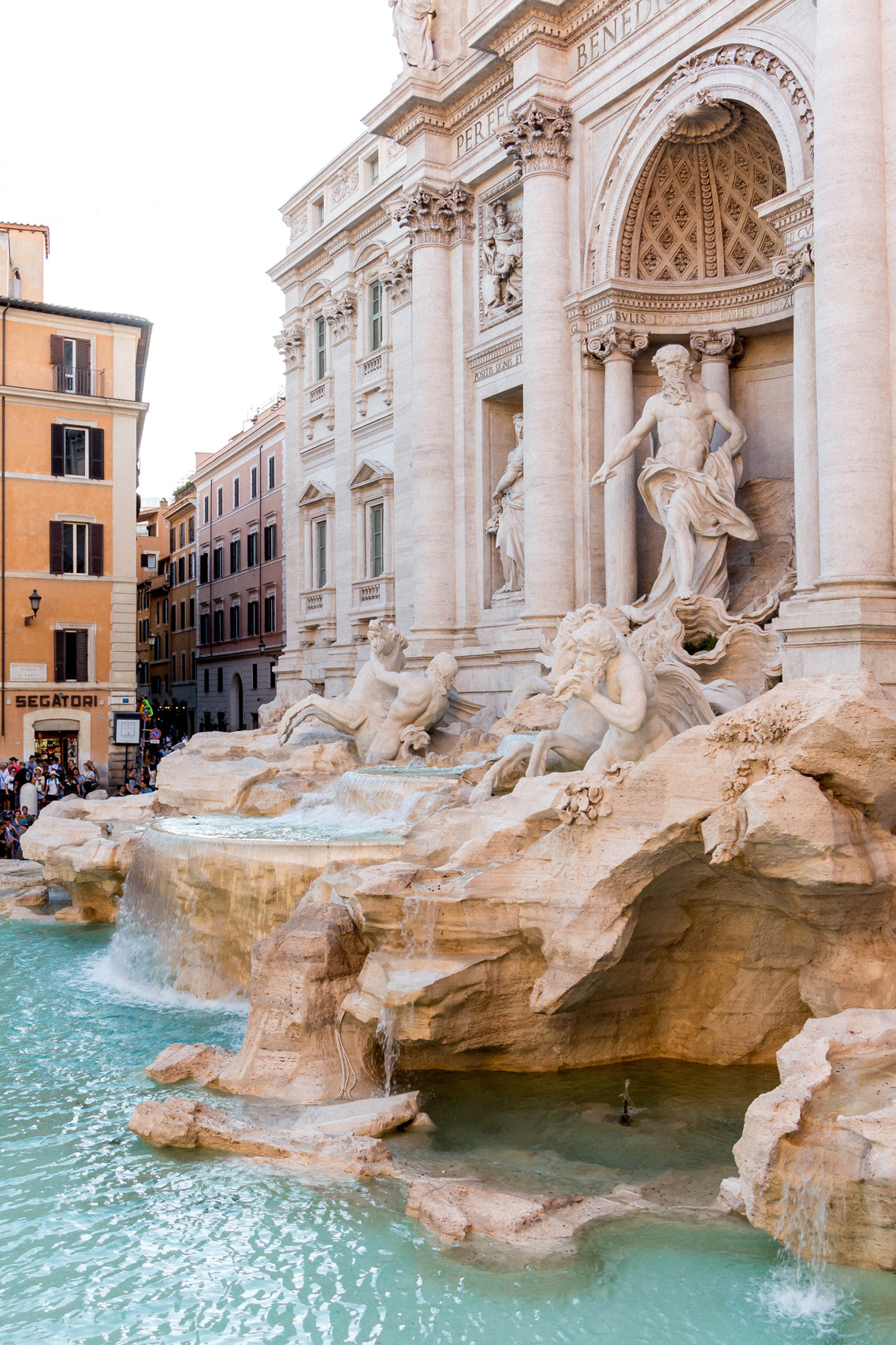
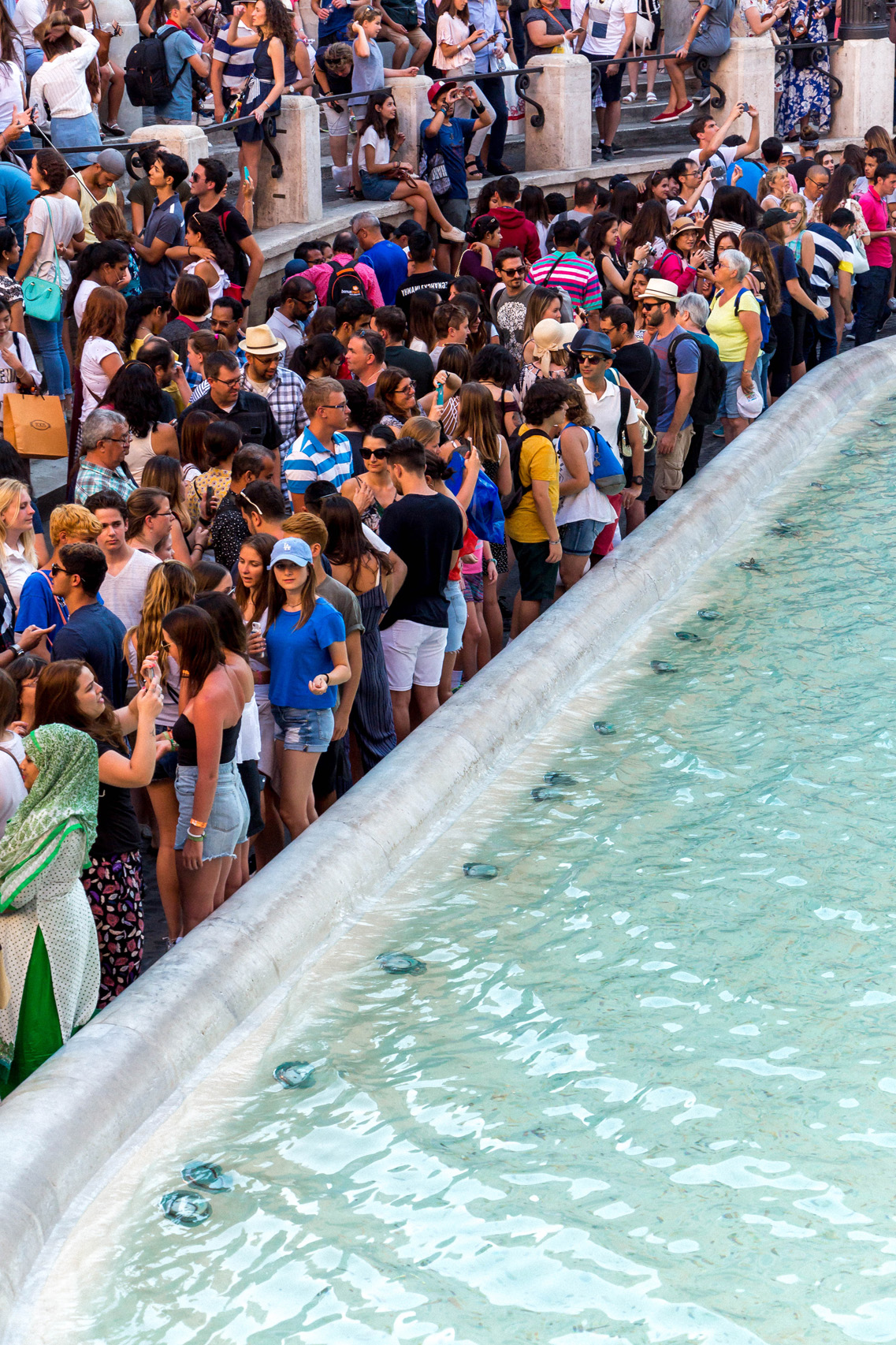
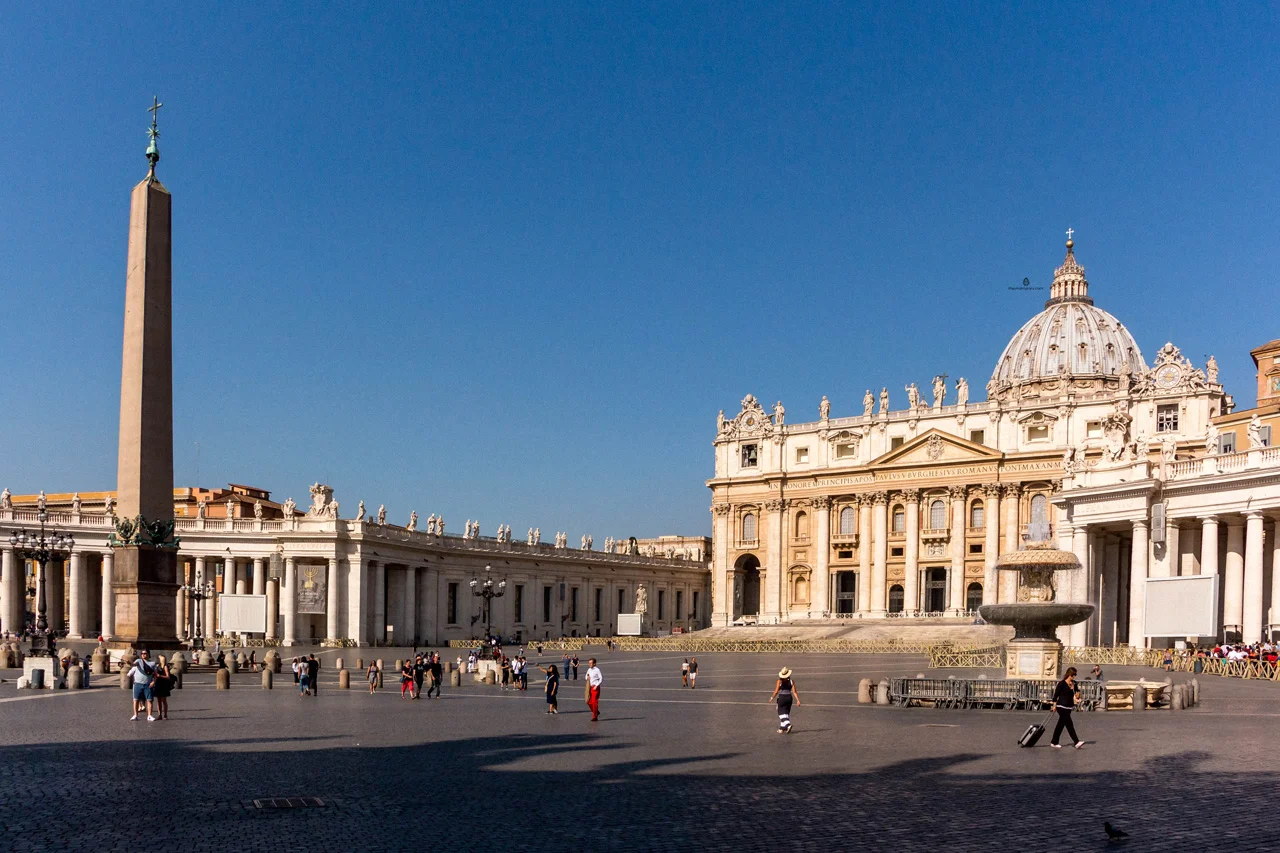

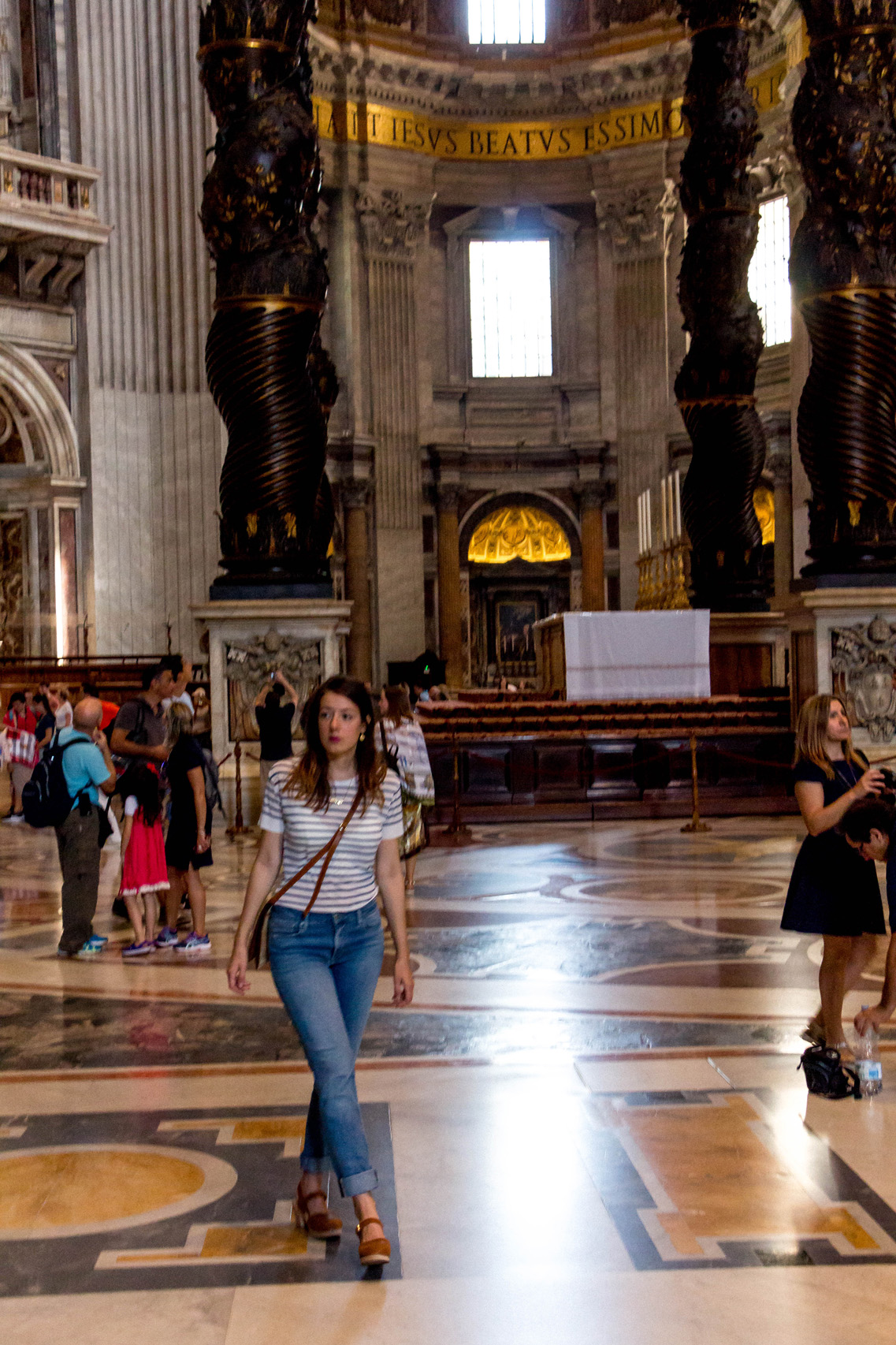
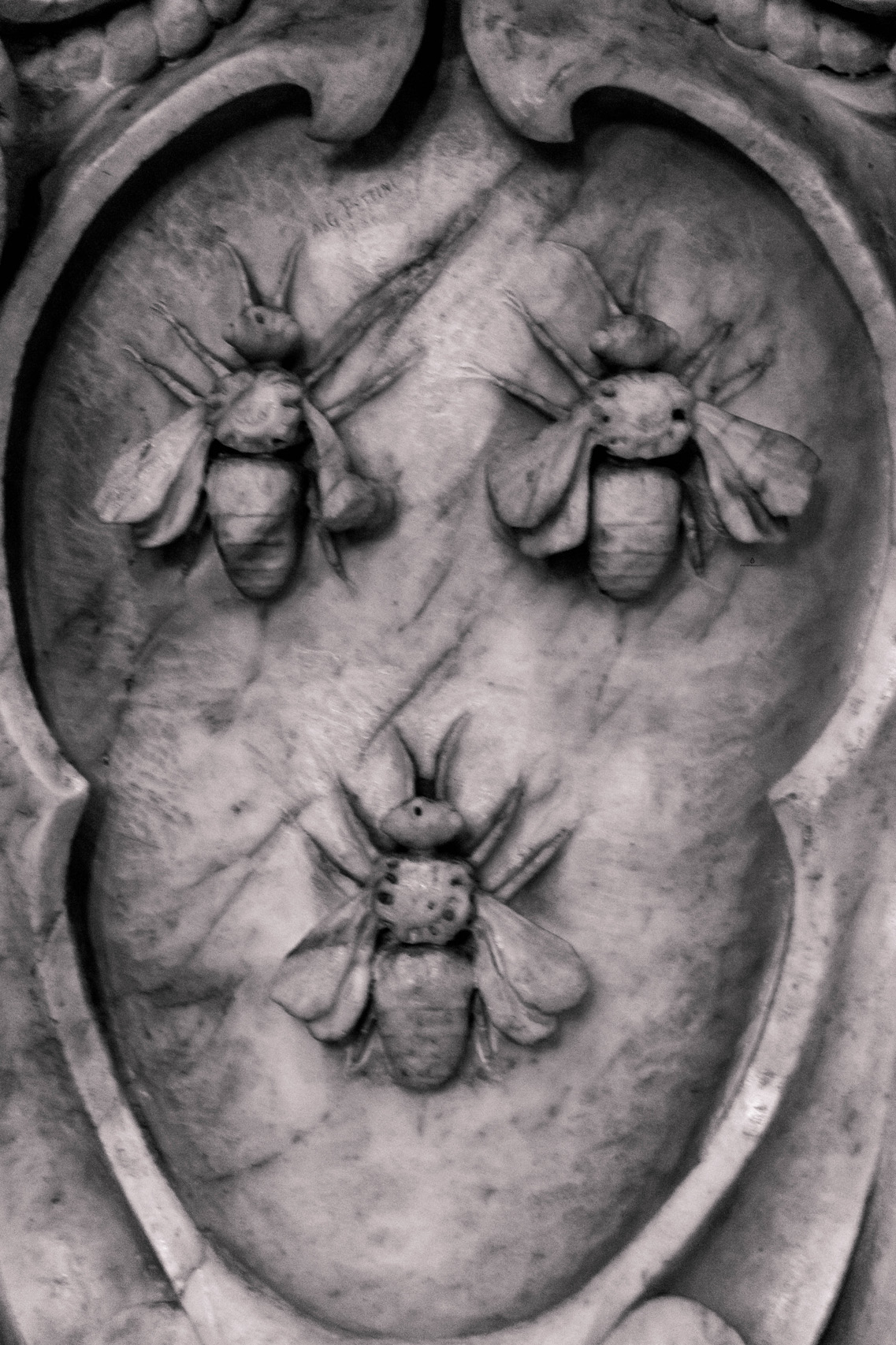
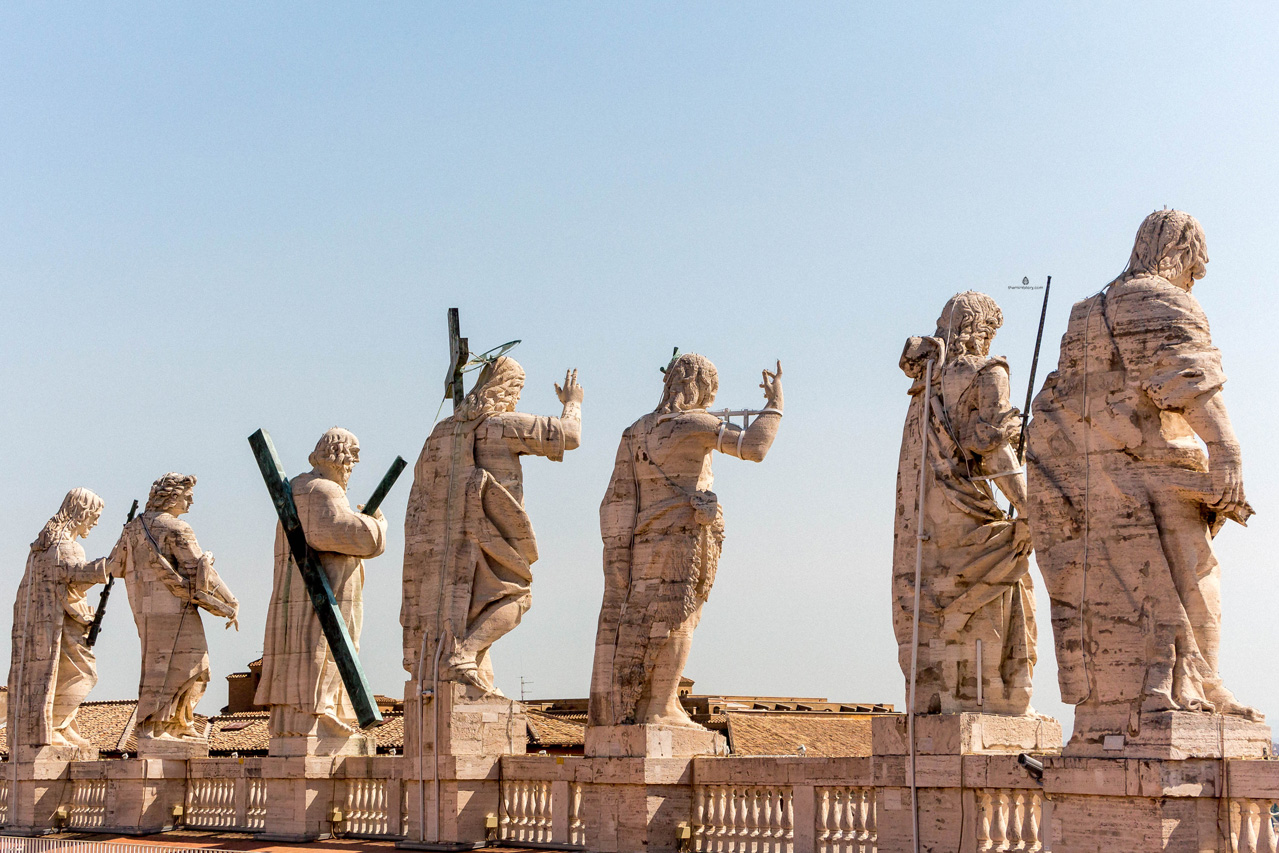
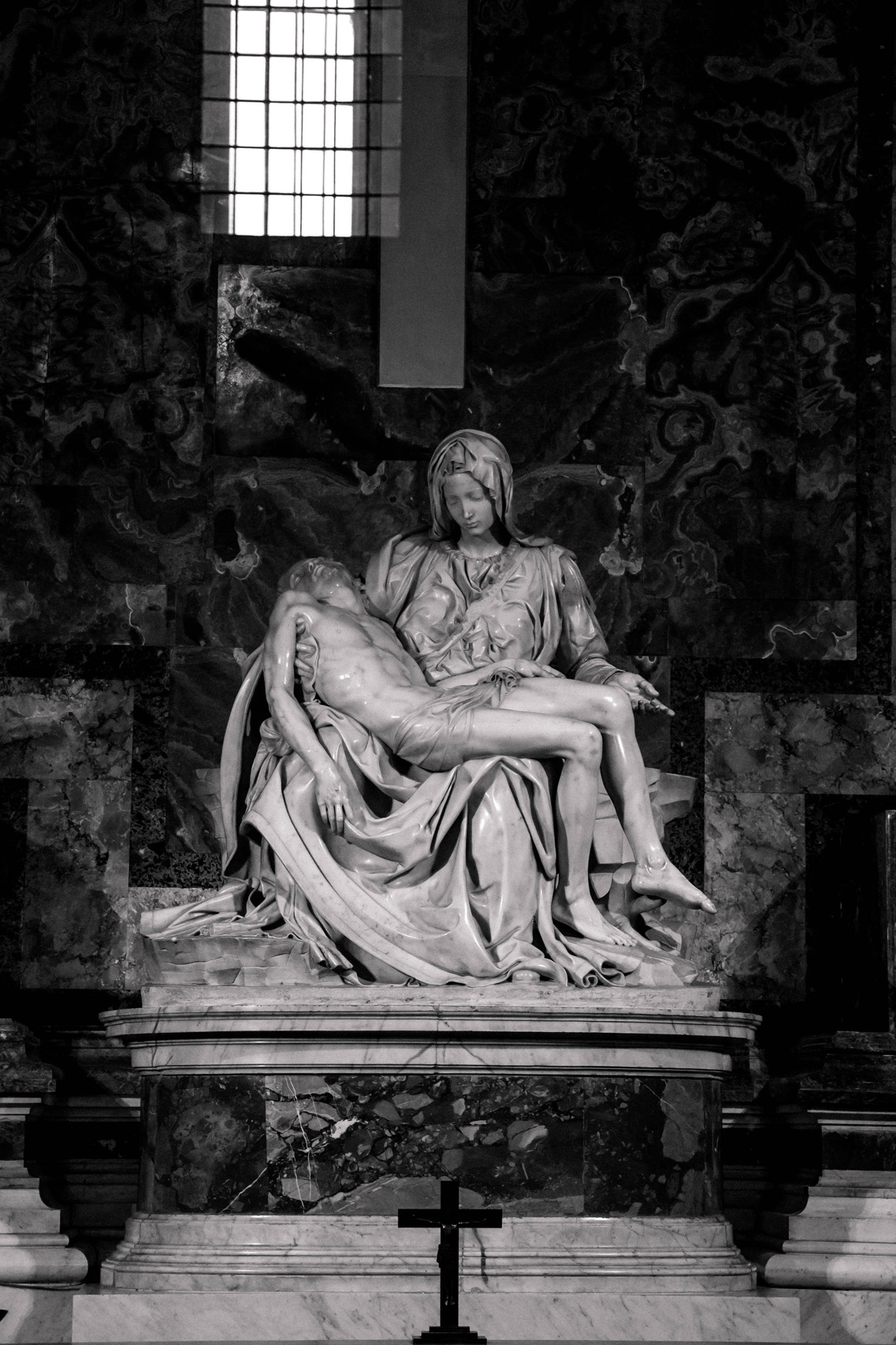


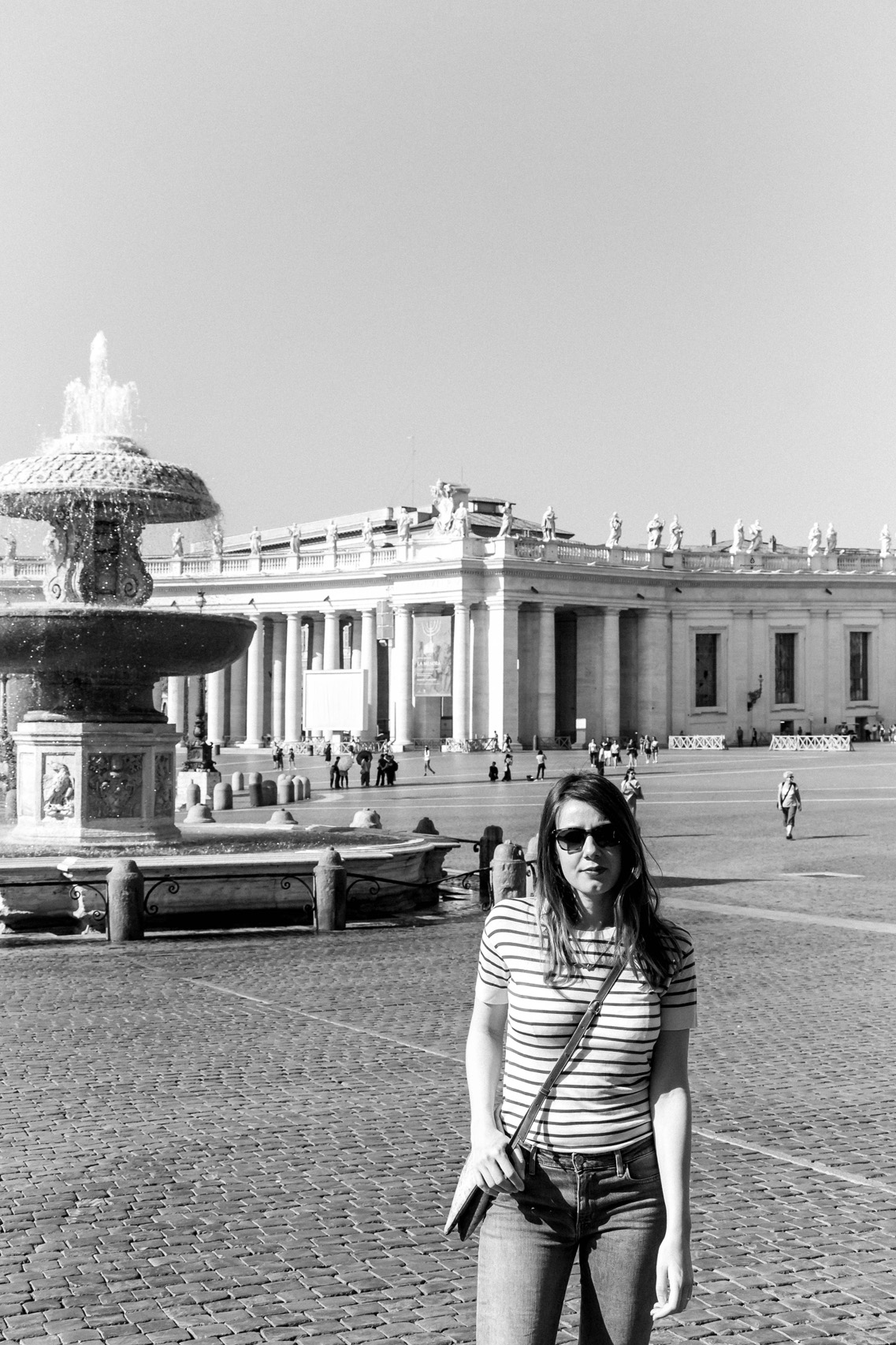
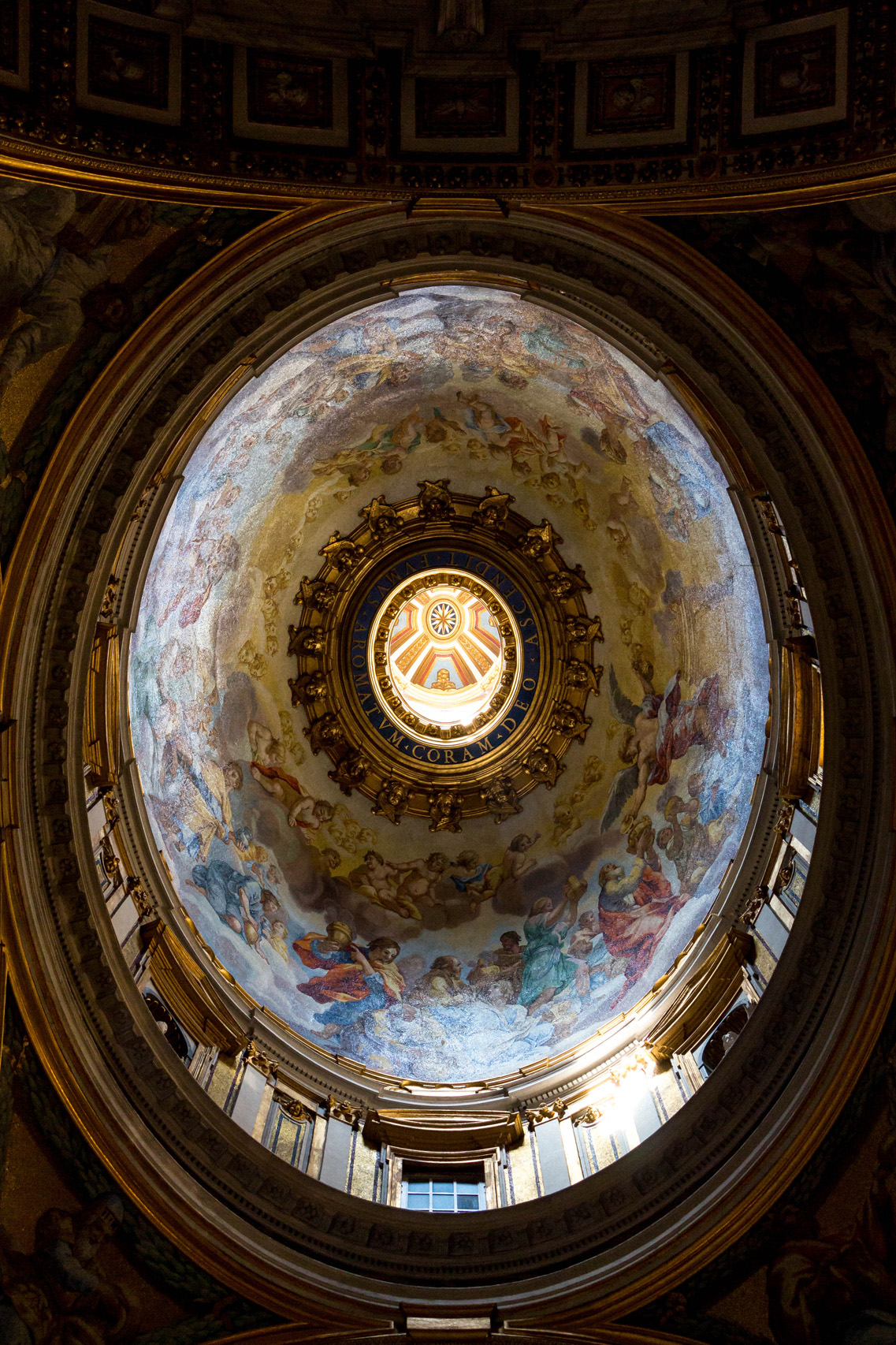

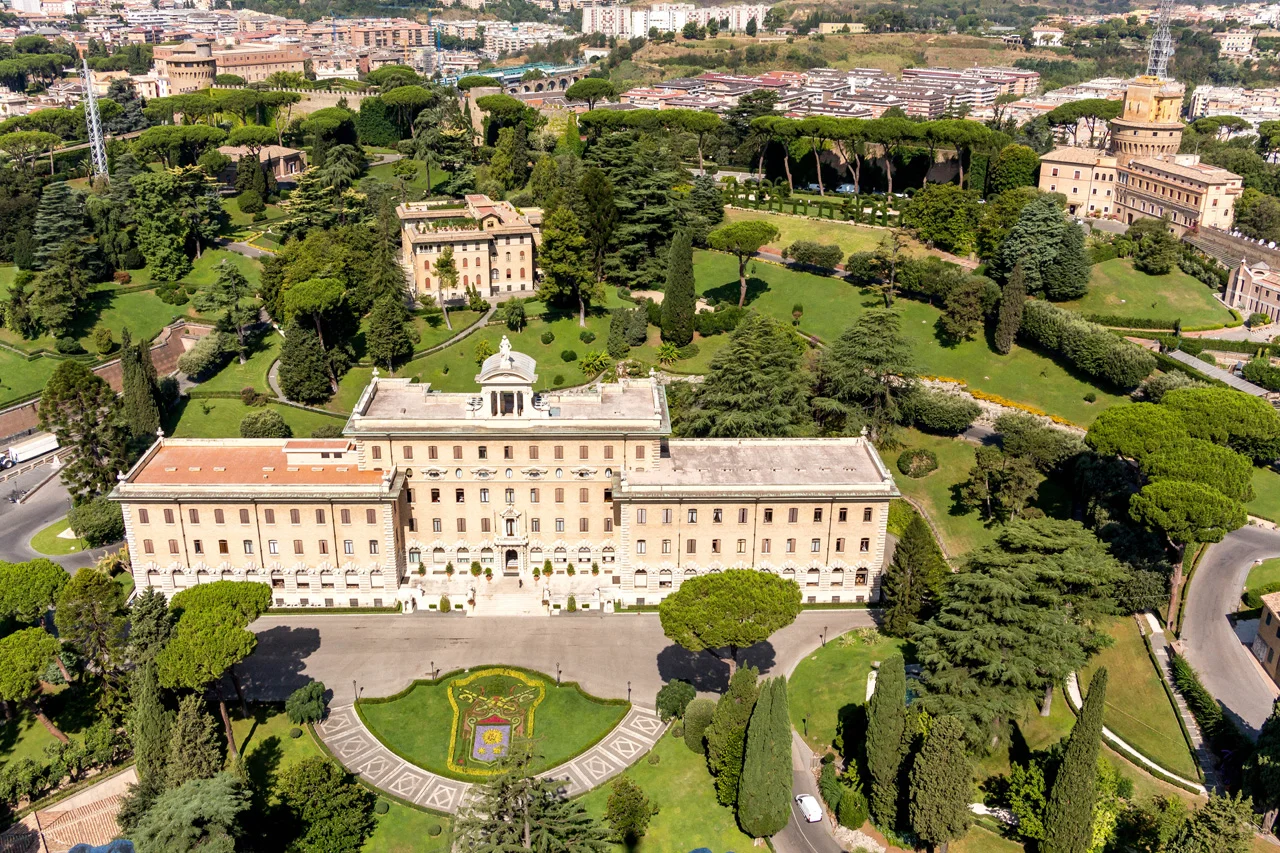
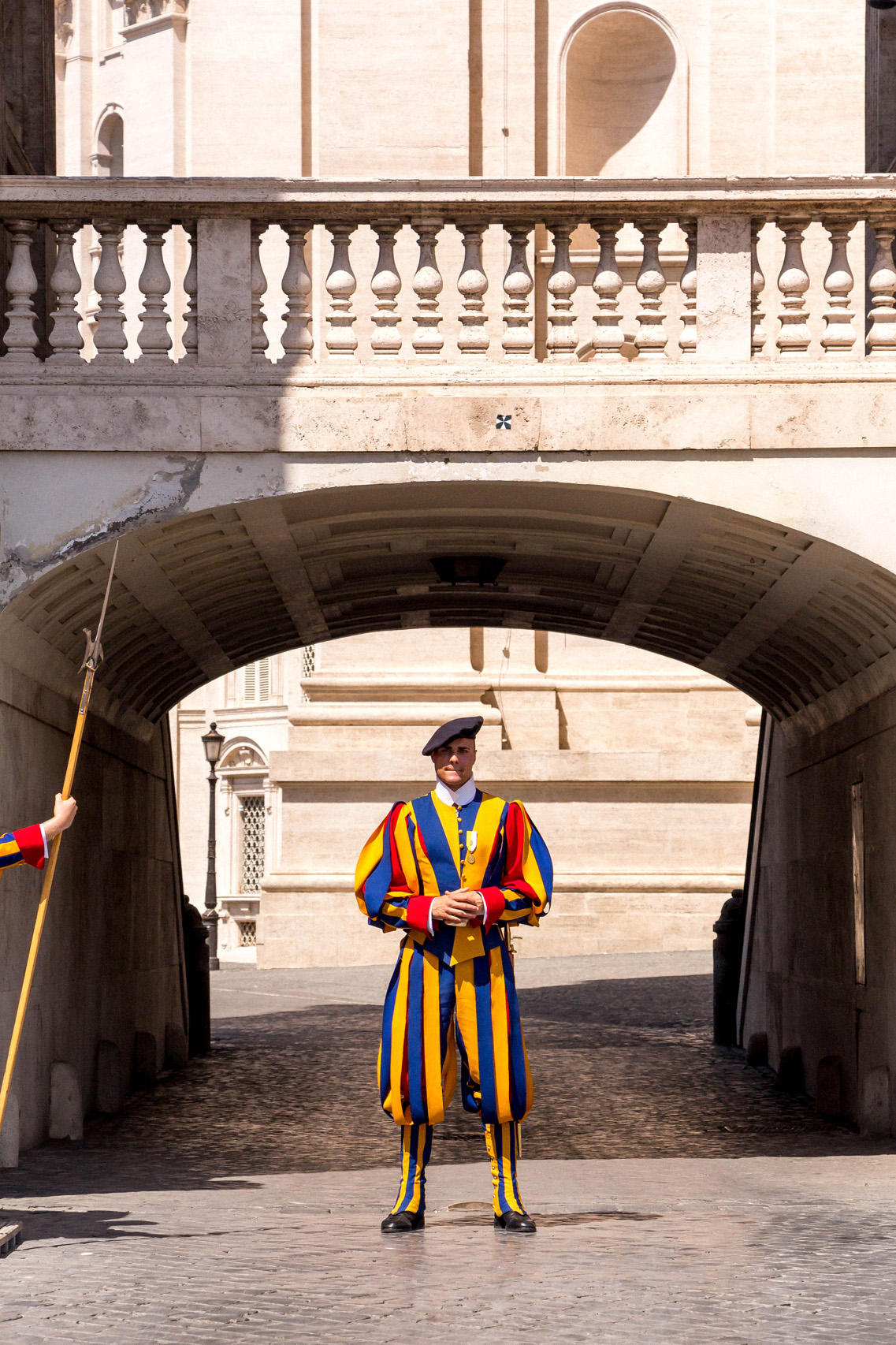
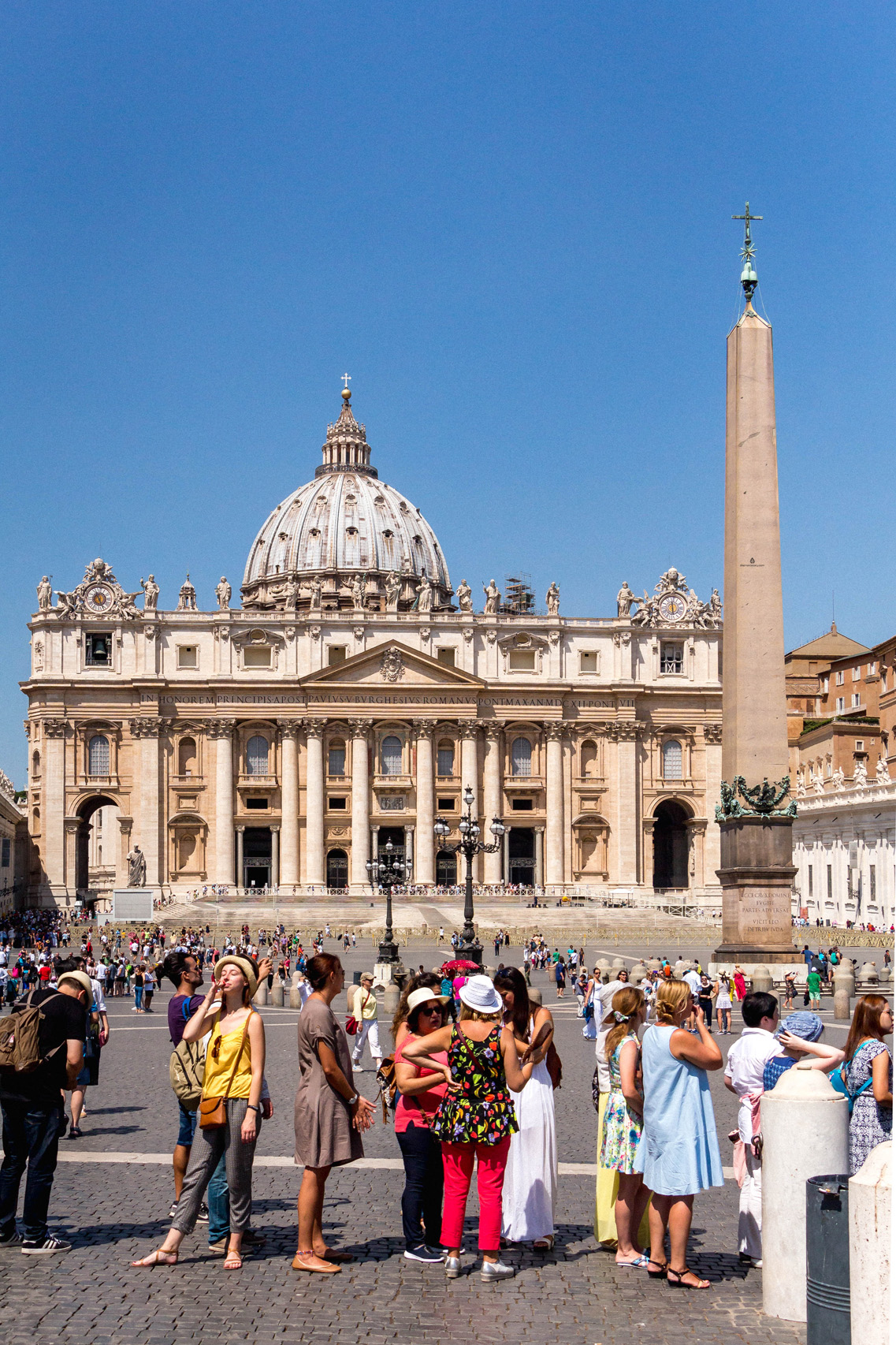

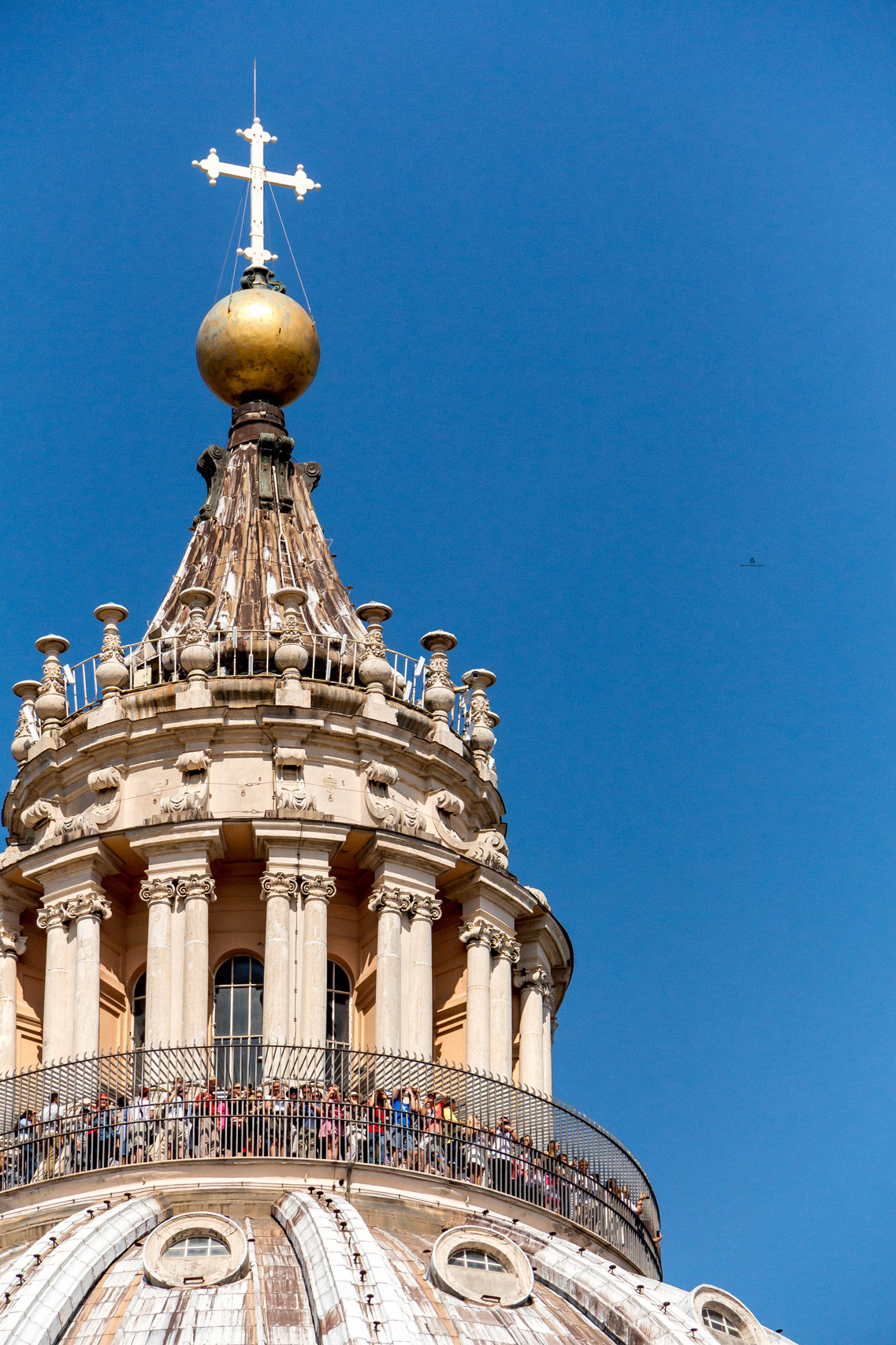
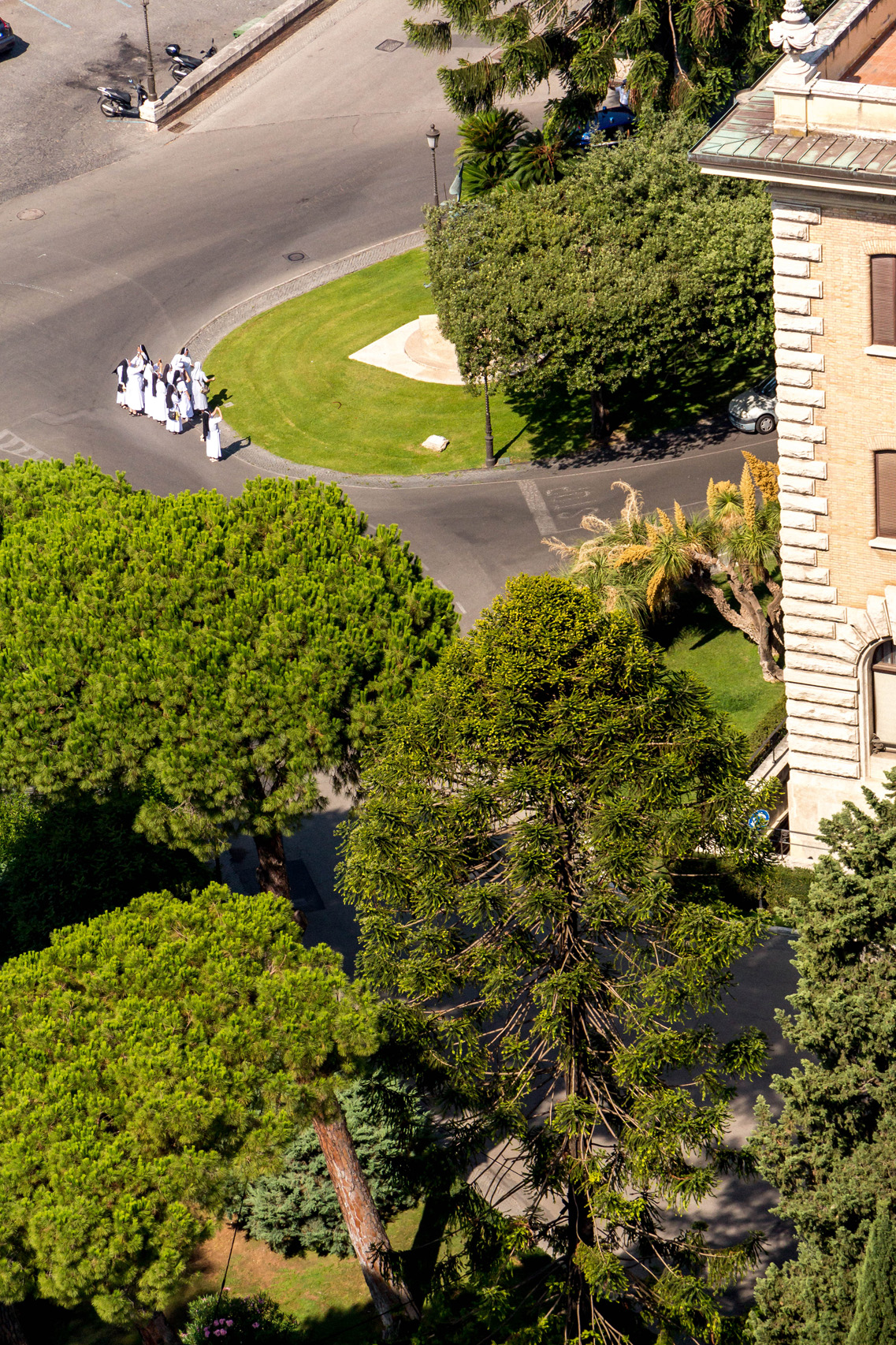
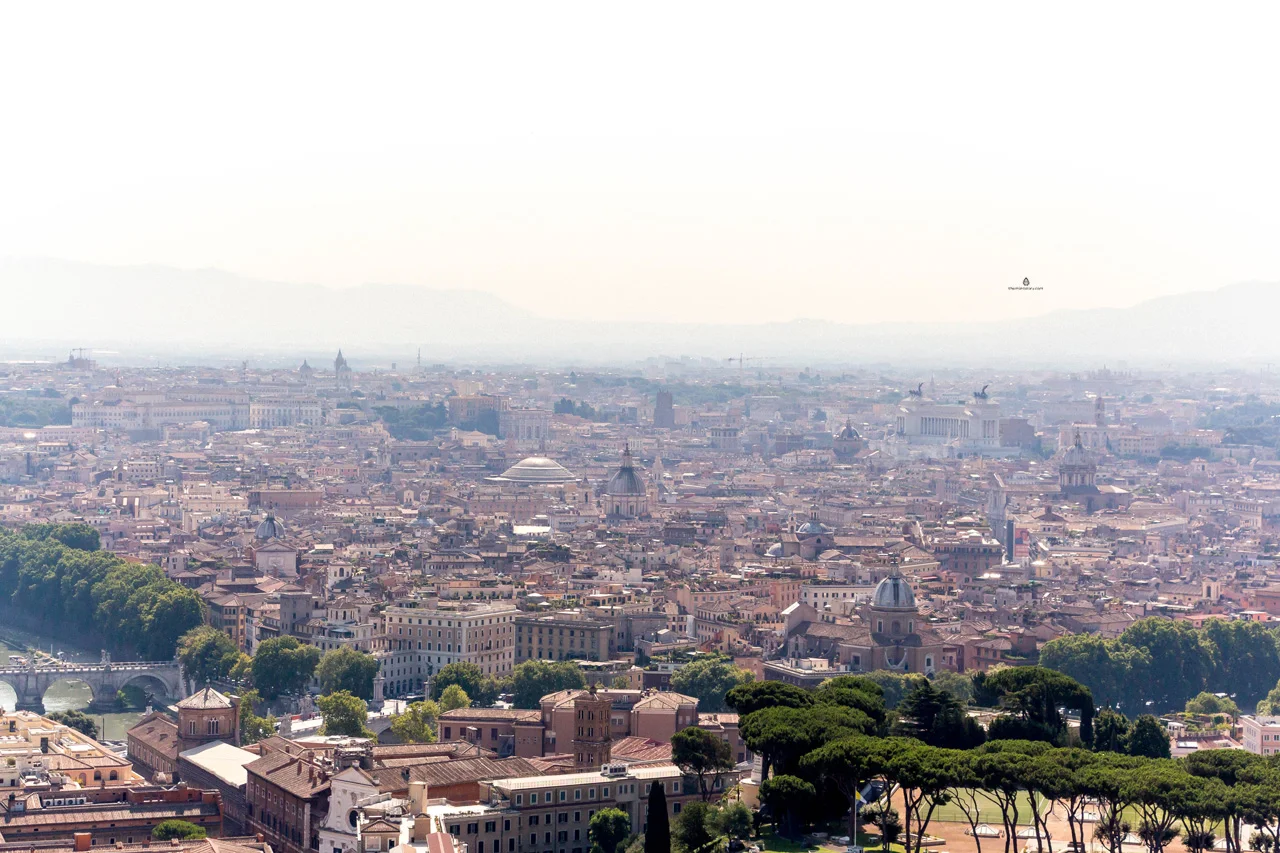
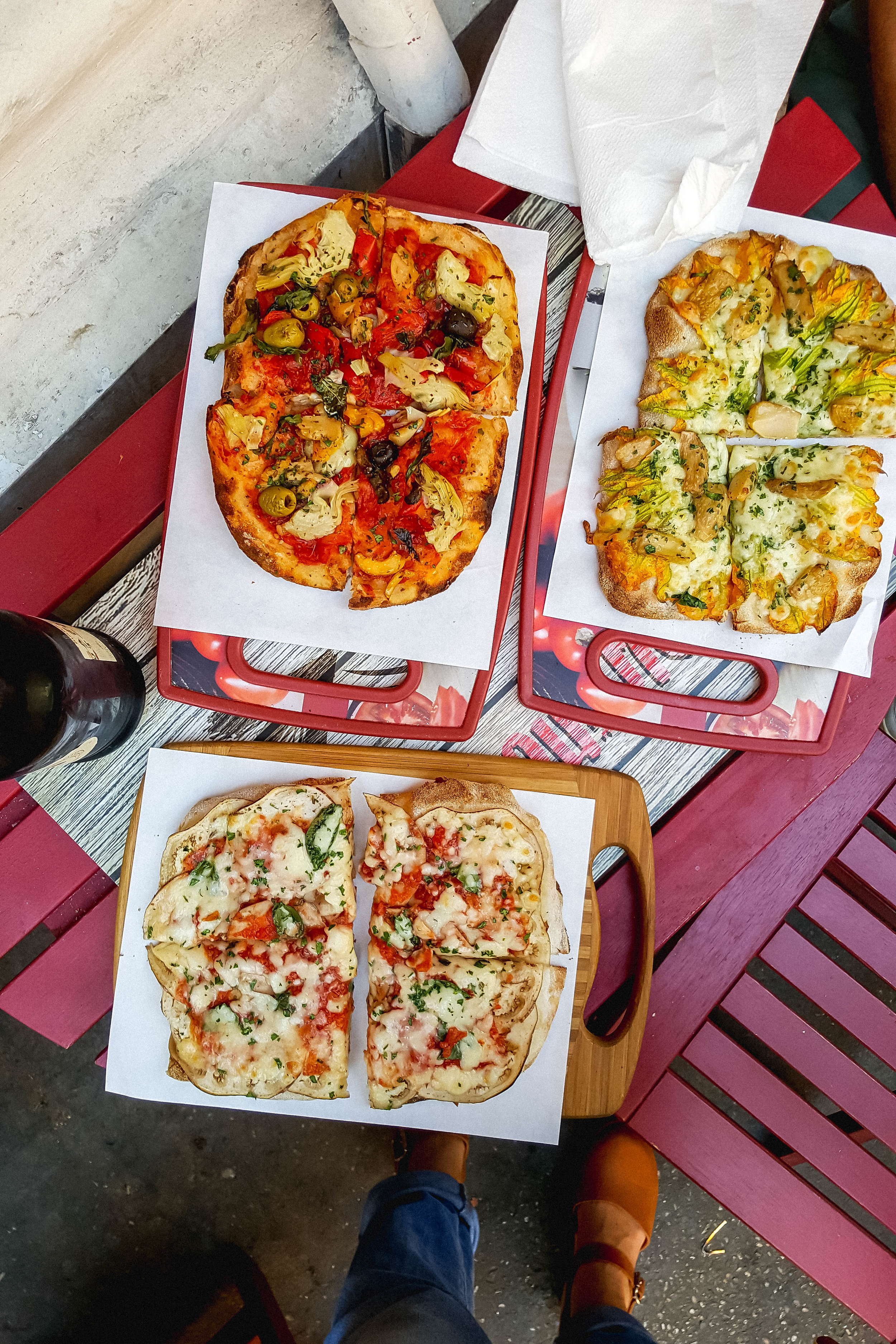
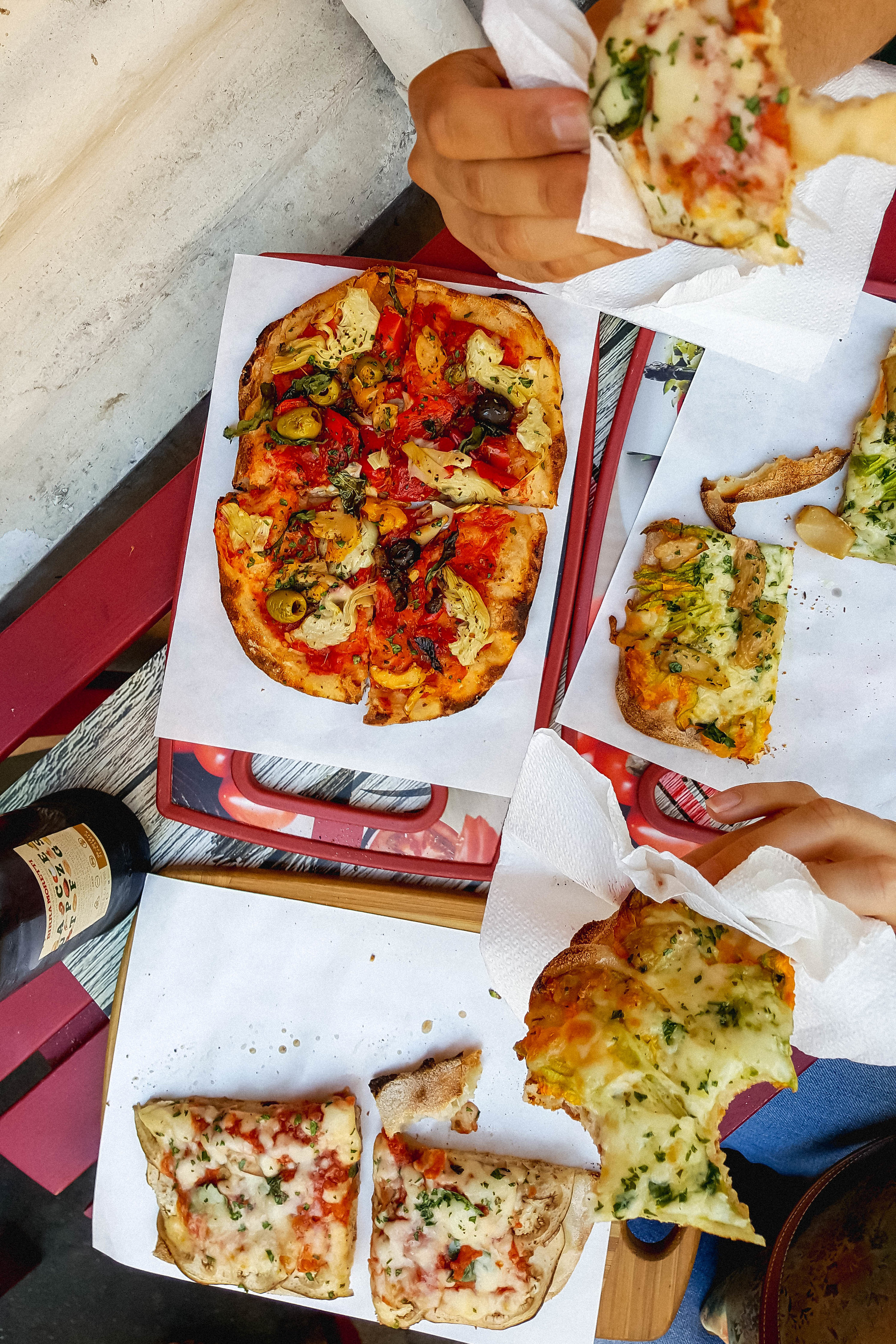

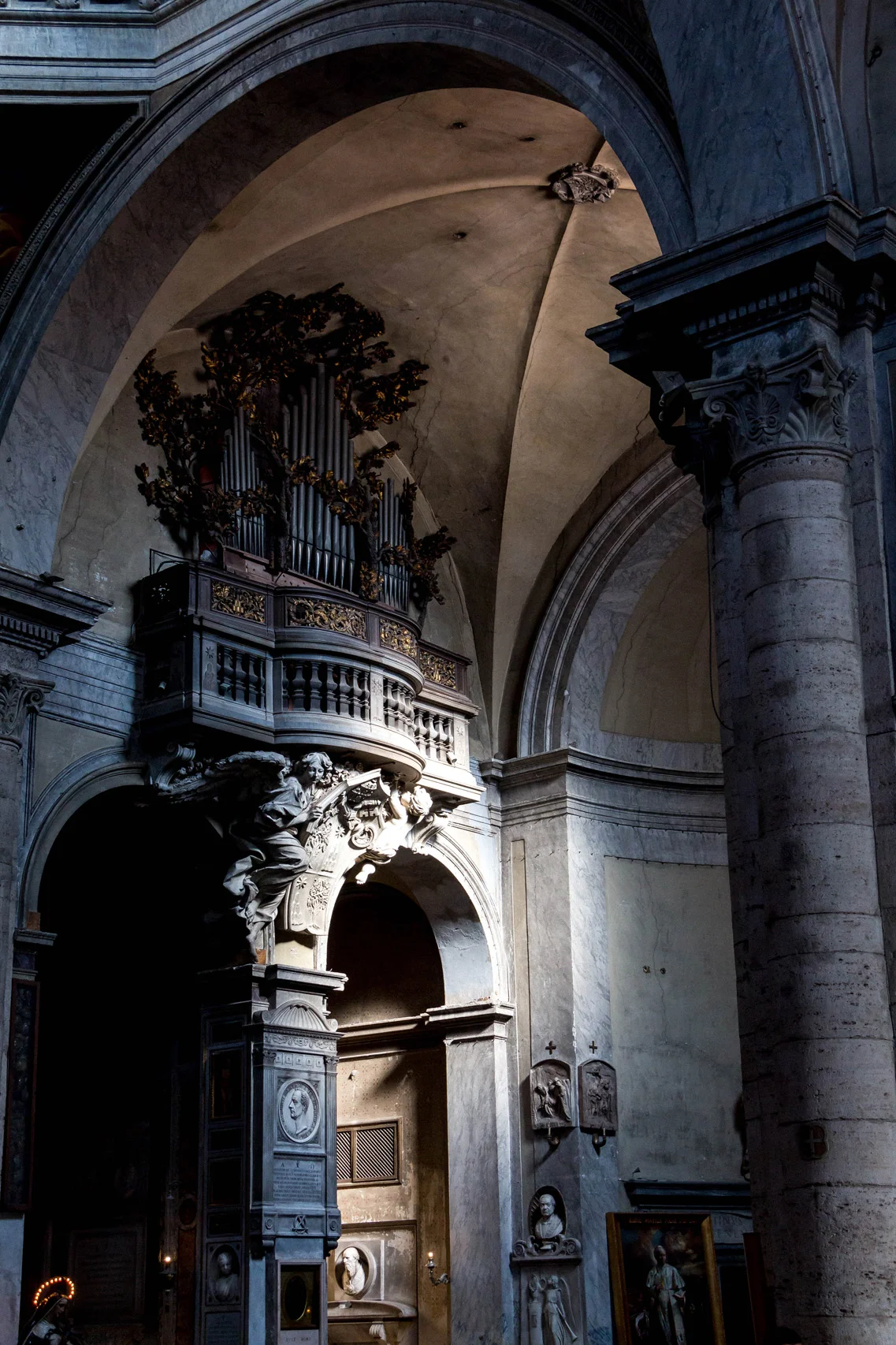
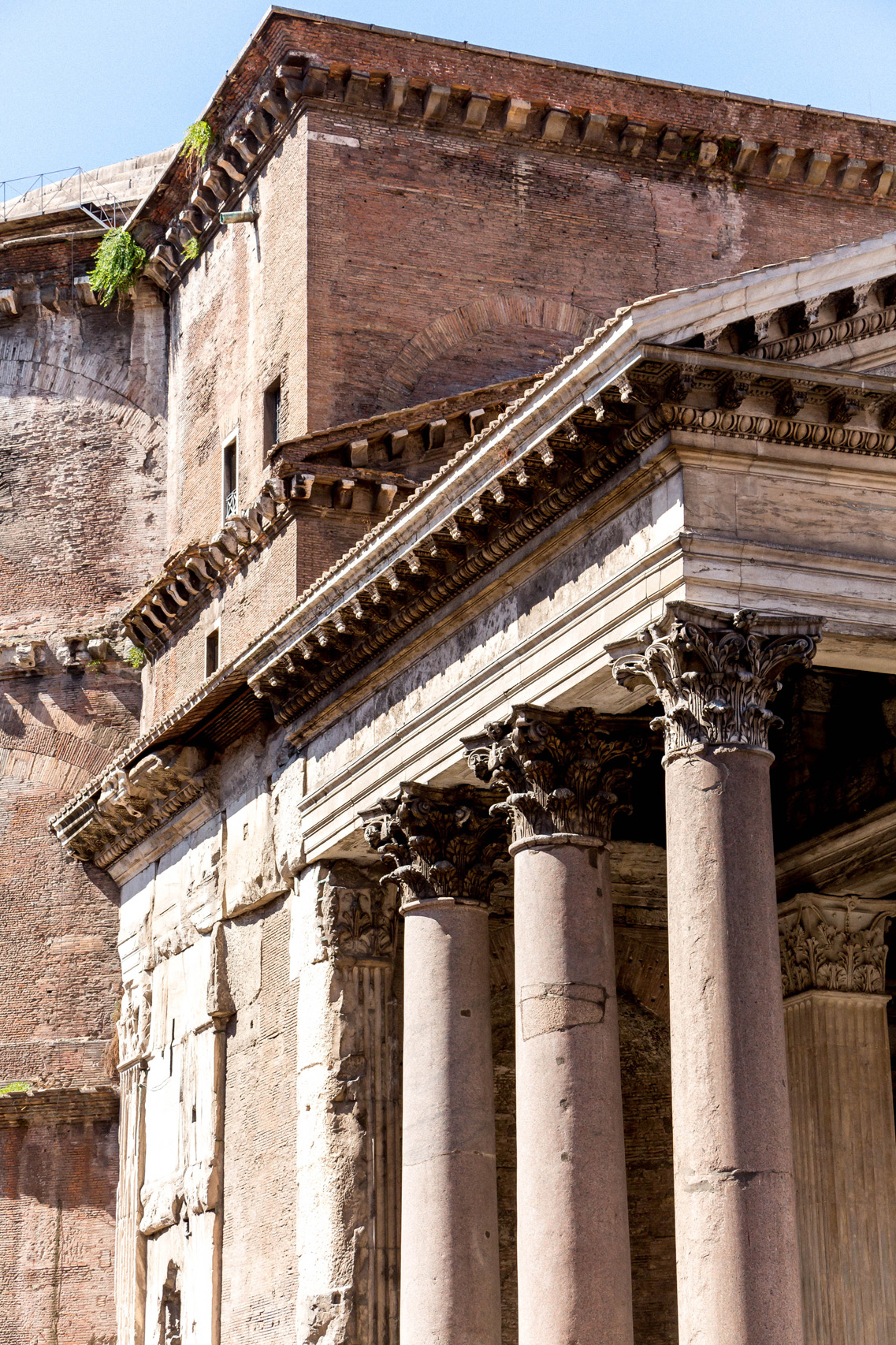
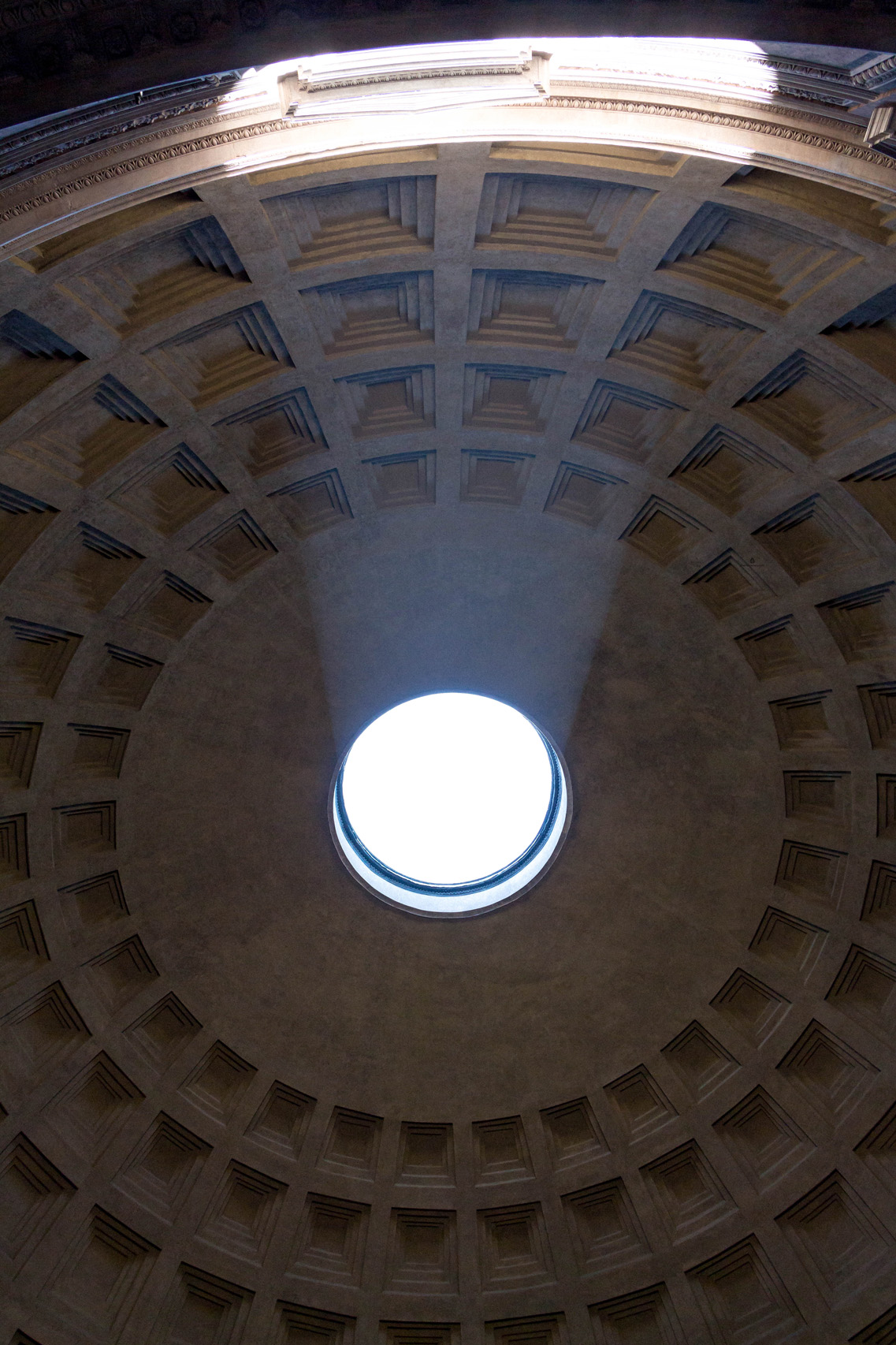
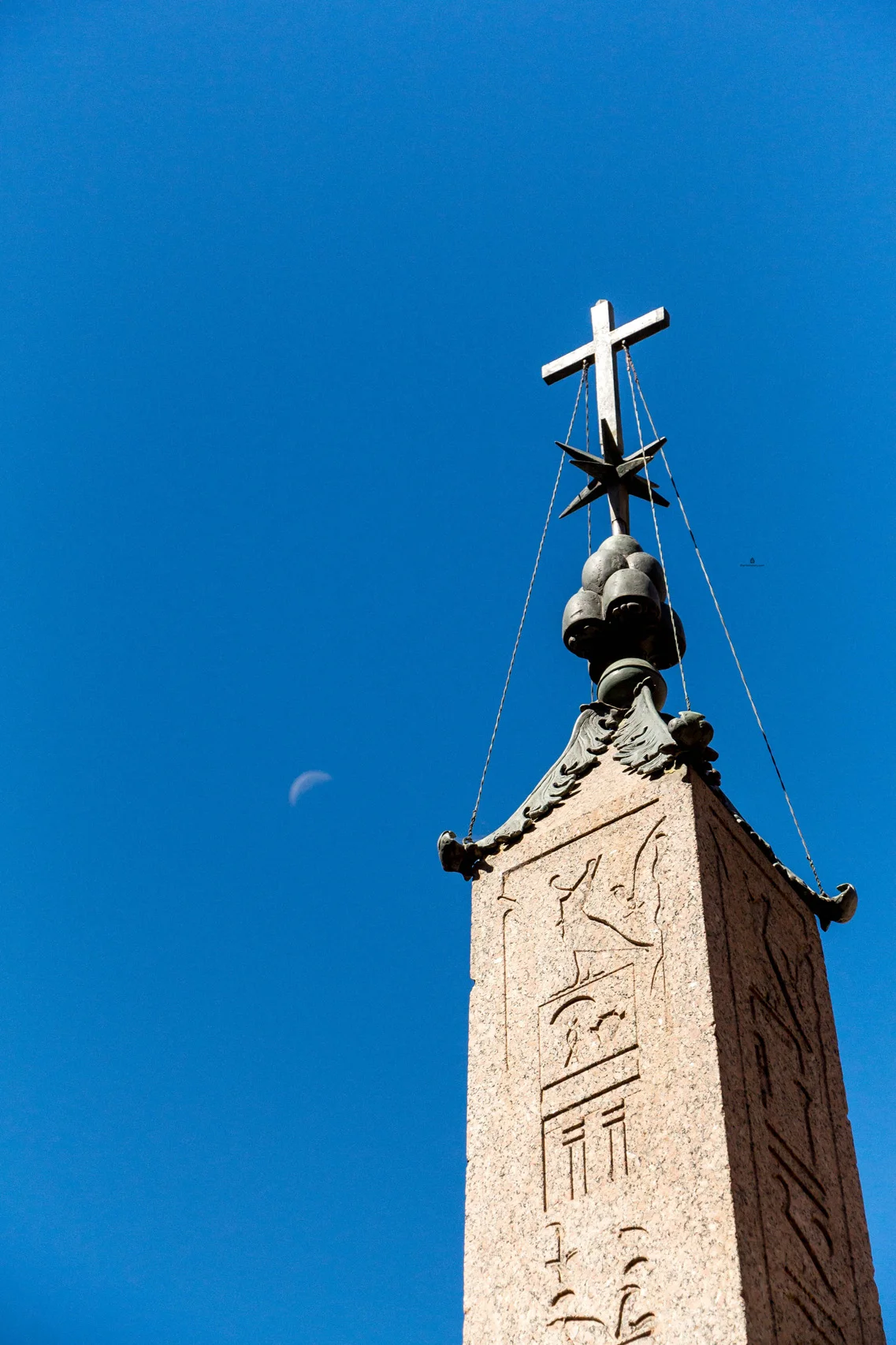
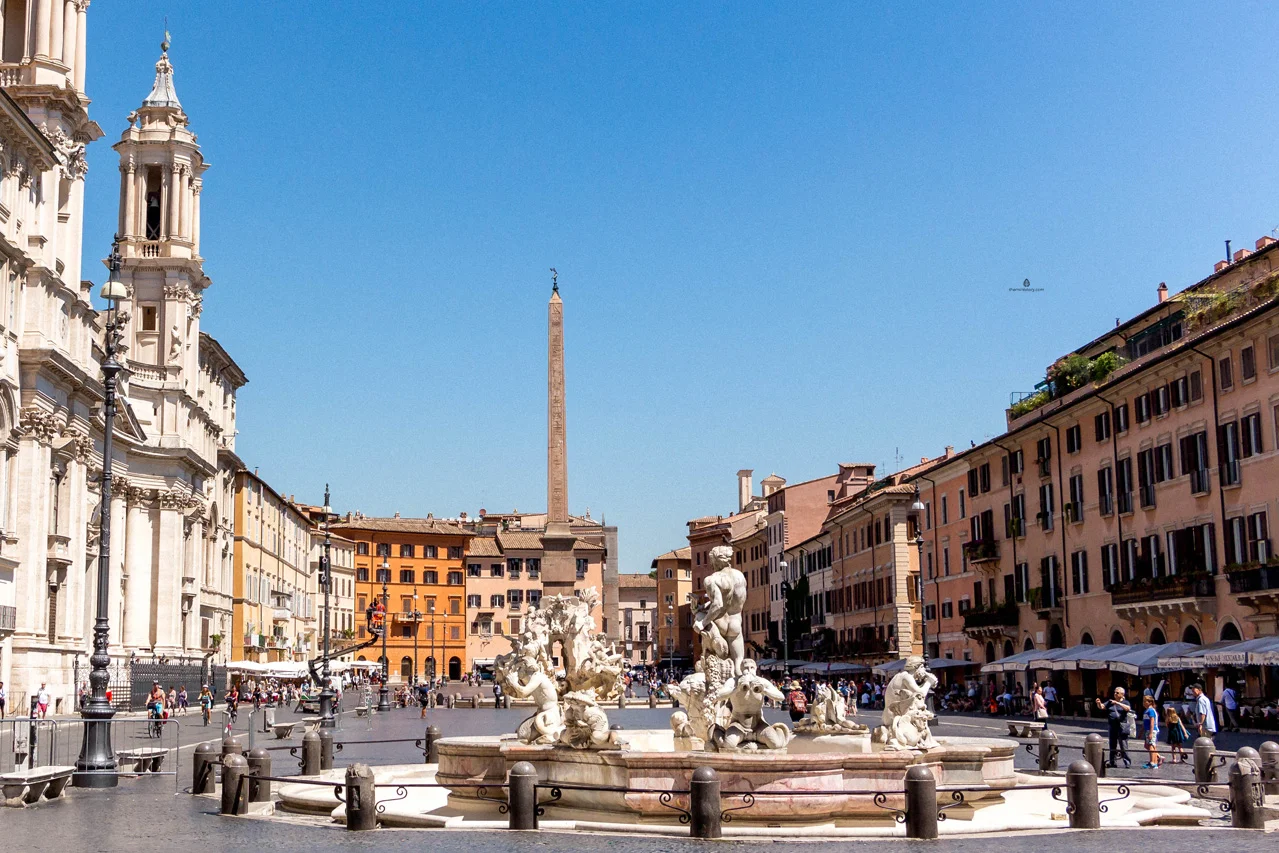
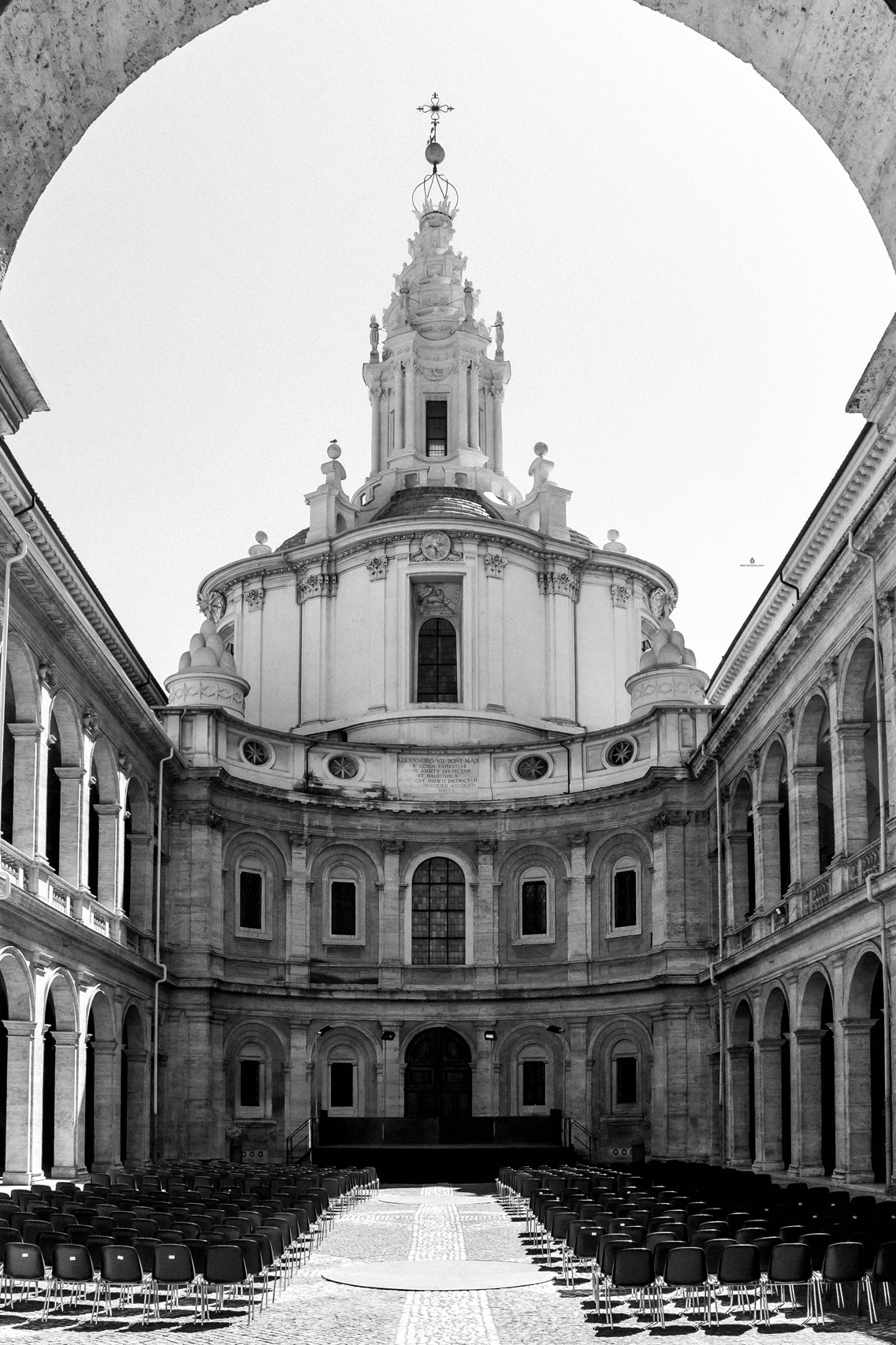
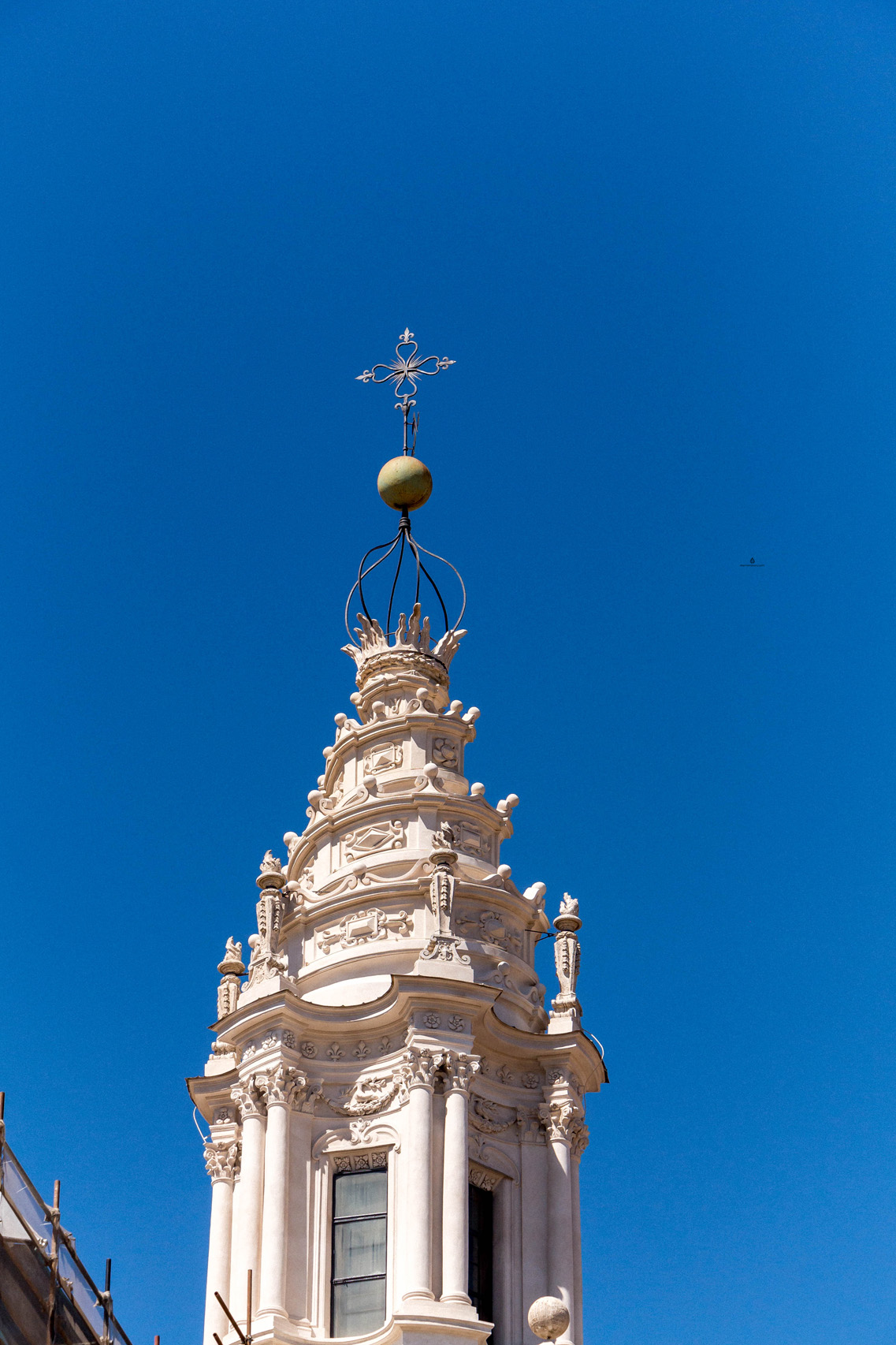
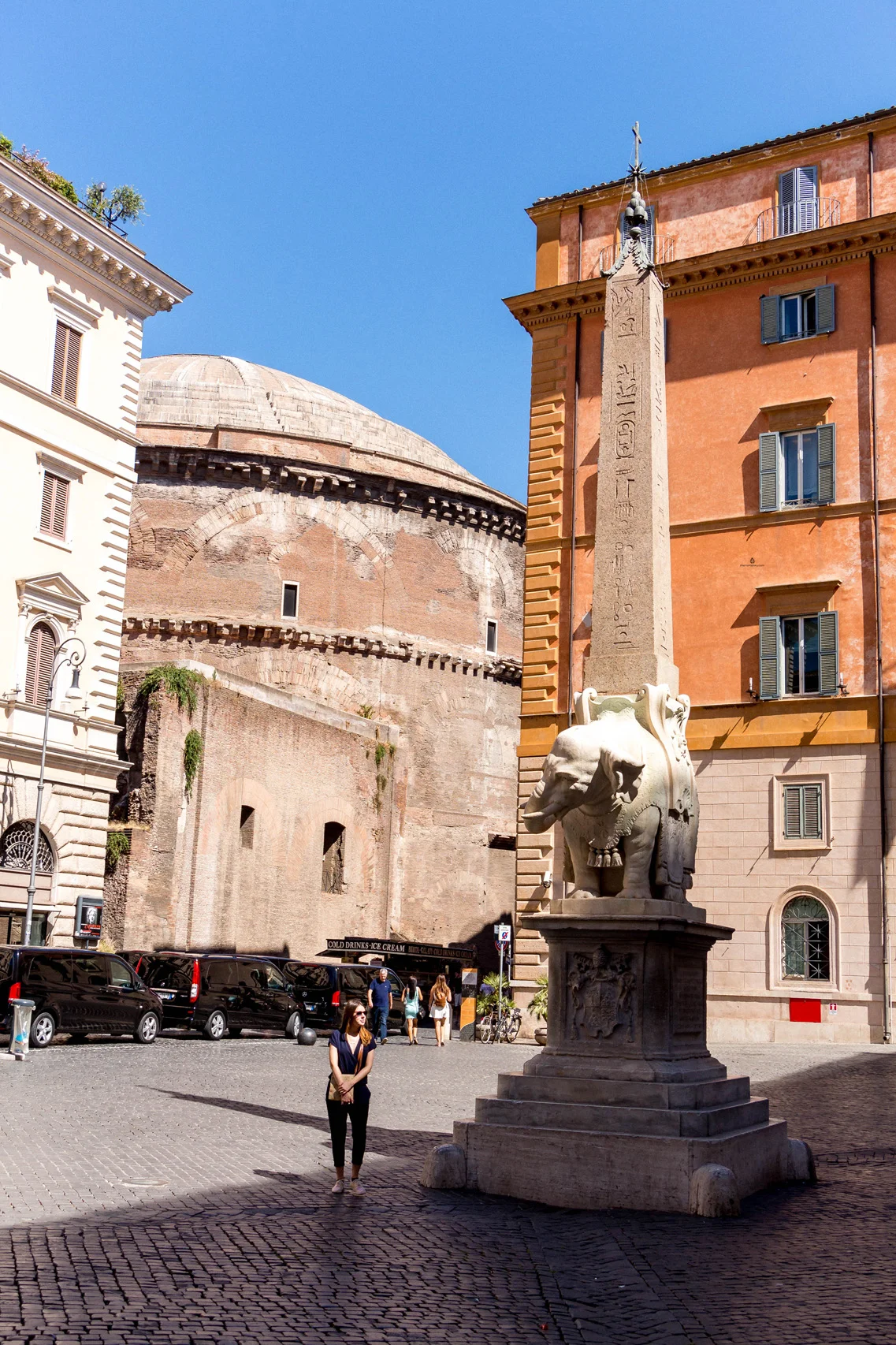




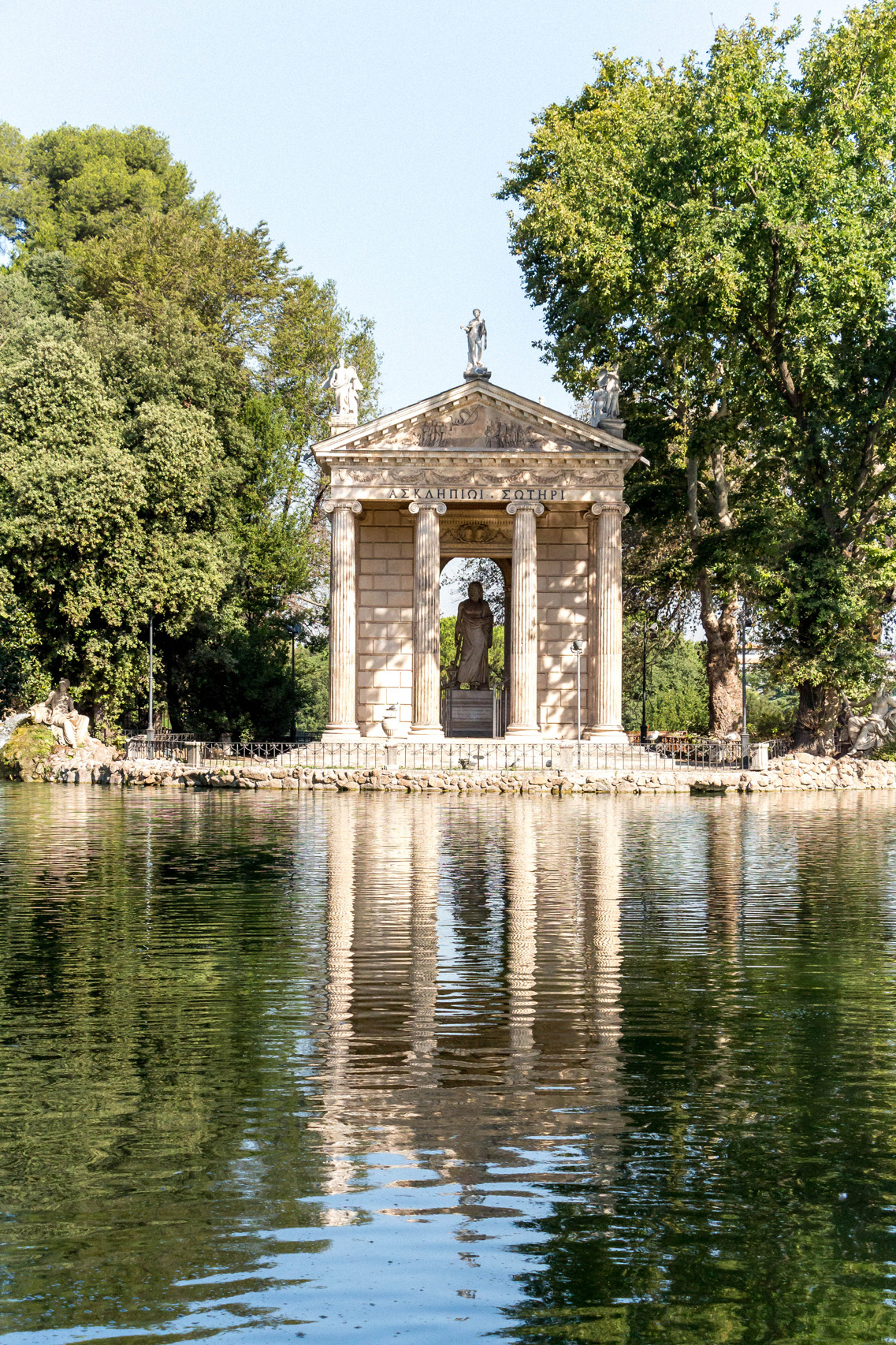
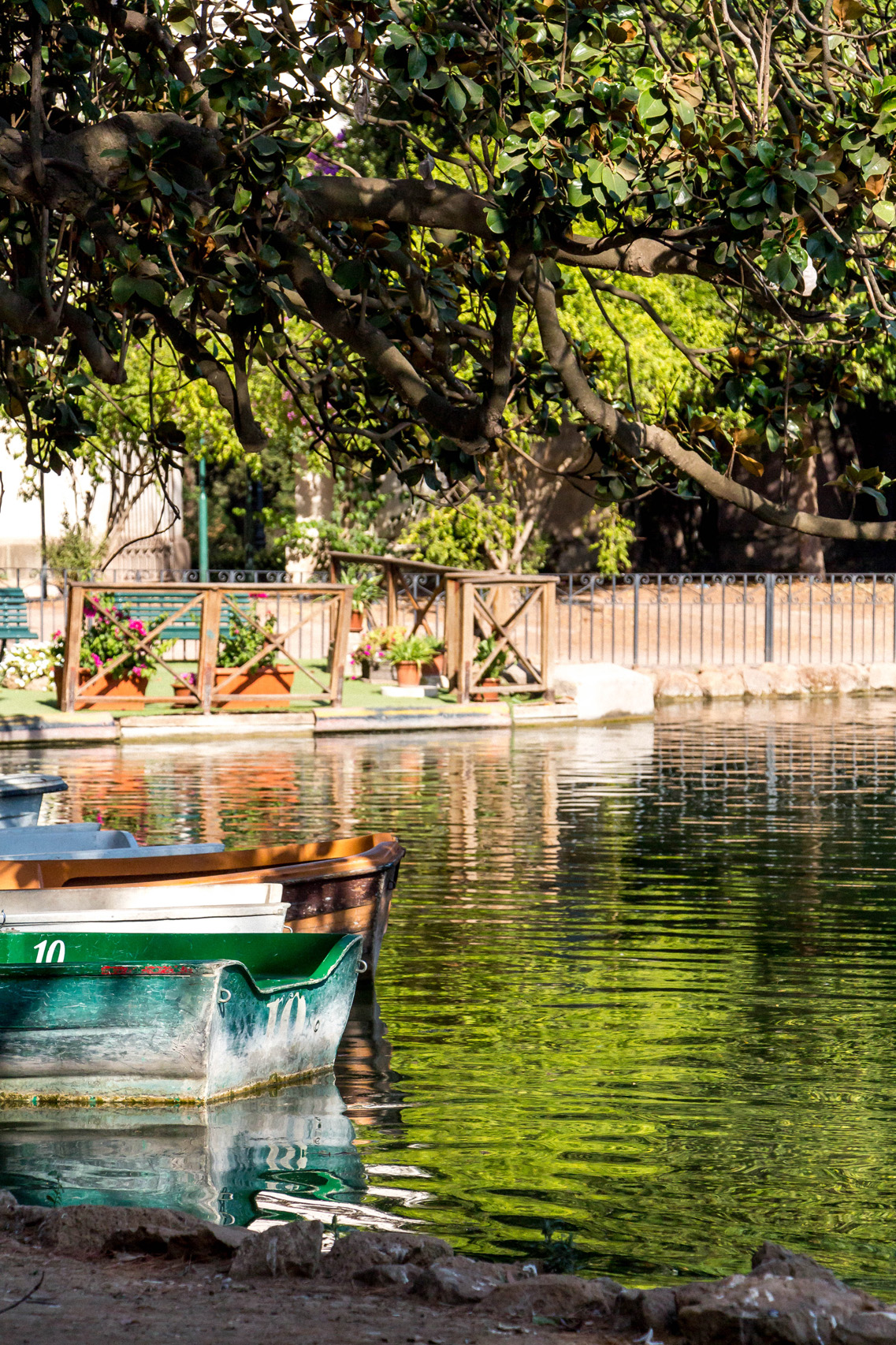
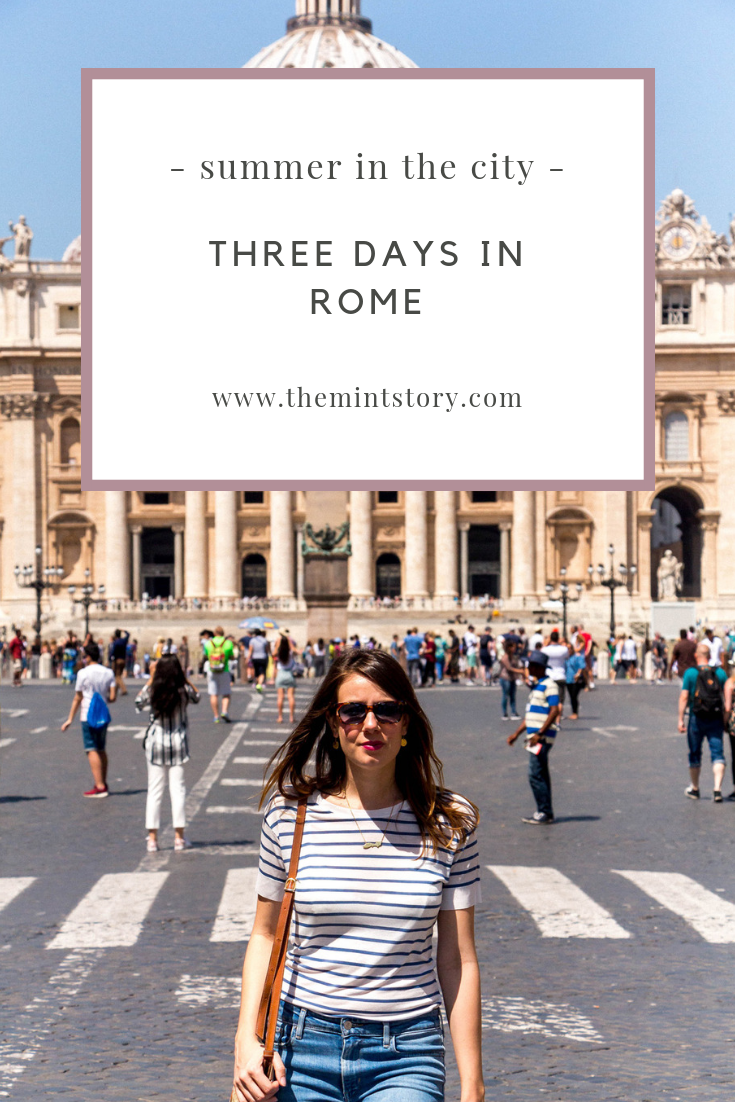





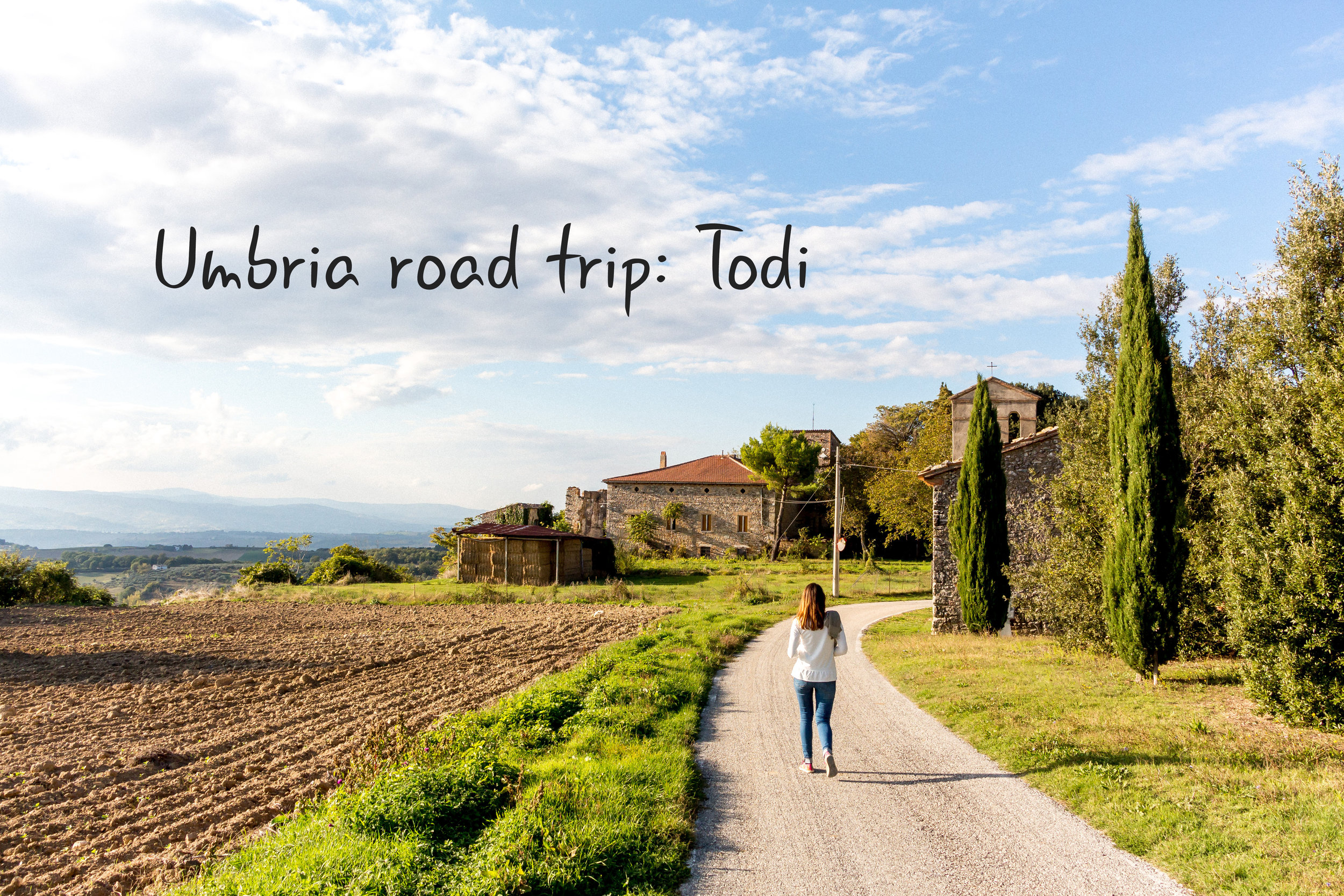


Two summers ago, between a couple of days spent in our dear Padova, and a week on our dear Marettimo, we squeezed in a day trip to Bologna, a little more than an hour’s drive from Padova.